www.lanacion.com.ar
El gran hombre detrás de los beatles
Por Francia Fernández | Para LA NACION
Domingo 30 de noviembre de 2014
La figura de Brian Epstein es reflejada en una novela gráfica, devenida boom literario que se hará película próximamente. El creador, Vivek J. Tiwary, cuenta su pasión por el "quinto beatle" y cómo logró la cesión de la música

El cómic sobre Epstein refleja la dura y corta vida del manager de los Beatles.
La historia es conocida. A fines de 1961, Brian Epstein regentaba la tienda NEMS, que sus padres tenían en la calle Great Charlotte de Liverpool, cuando un cliente preguntó por My Bonny, un single que los Beatles habían grabado en Alemania y que no figuraba en su catálogo. Como The Cavern Club, el local donde tocaba la banda, quedaba a la vuelta de la esquina, decidió ir a preguntarles. Ahí estaban, en plena presentación. "Fue un nuevo mundo para mí. Me impactó su música, ritmo y sentido del humor. Y luego, cuando los conocí fuera del escenario, me impactaron de nuevo por su carisma", dijo Brian. A poco andar, se convirtió en el manager de la banda. Y así comenzó todo.
Epstein es la estrella de la novela gráfica The Fifth Beatle: the Brian Epstein Story, que escribió Vivek J. Tiwary y que, a la tercera semana de su edición, trepó al número 1 de los bestsellers de The New York Times. El libro, que publicó la editorial Dark Horse a fines de 2013, cuenta con las magníficas ilustraciones de Andrew C. Robinson (Starman) y Kyle Baker (Plastic Man), y va camino a convertirse en una película. Se trata de una verdadera joya para fanáticos, además de un relato poético sobre la travesía de un hombre que, aparte de cambiarles la vestimenta y los peinados a los Beatles, estaba determinado a hacerlos famosos, mientras lidiaba con sus propios demonios. Es la primera vez que Paul McCartney, Ringo Starr, Olivia Harrison y Yoko Ono están de acuerdo en ceder los derechos de las canciones para un film. "Creo que Paul y Ringo sintieron que era una historia que necesitaba ser contada. Además, les gustó el guión, que lo estoy escribiendo yo", comenta Tiwary al teléfono desde Nueva York, y admite que, en una carta, Paul le dijo cuánto había disfrutado del cómic sobre Epstein.
Descendiente de una familia indoamericana, Tiwary (41) tenía inclinaciones artísticas y soñaba con trabajar en la industria del entretenimiento, algo que iba contra lo que se esperaba de él, ya que, por tradición, debía ser abogado o ingeniero. Mientras cursaba materias en la Wharton School of Business decidió estudiar como caso El negocio los Beatles. "Tenía 23 años. Crecí escuchándolos en casa, así que era un fan. Como mucha gente, estaba fascinado con la banda, por lo que representaron para el mundo, por su música, que es fantástica, pero me interesaba también el lado humano: cómo habían llegado a convertirse en lo que fueron, y fue entonces cuando Brian Epstein apareció más claramente. Él, que era judío, homosexual y provenía de un lugar entonces desconocido llamado Liverpool. Era un outsider, que trataba desesperadamente de encajar. Esos elementos me atrajeron", cuenta Tiwary, que en los 90 trabajó en el sello discográfico Mercury y que luego fundó su propia compañía, Tiwary Entertainment Group (TEG), con la que produjo exitosos espectáculos en Brodaway.
Como no había información suficiente, Vivek se lanzó a una investigación de casi dos décadas que, de algún modo, continúa, "porque no falta alguien que aparece y me aporta algún nuevo dato", dice. A lo largo de ese tiempo se entrevistó con miembros de la familia Epstein y con amigos cercanos de Brian, como Nat Weiss, abogado de los Beatles en los Estados Unidos, que era su confidente, y que está presente en algunas escenas del cómic. También se reunió con Sid Bernstein, productor musical y promotor de conciertos que se interesó por llevar a los Beatles a los Estados Unidos, en 1963.
Este año se cumplieron 80 del nacimiento de Eppy, como llamaban los Beatles a su representante, que a su vez se refería a ellos como los pibes. Atractivo, elegante, correcto, era un tipo intuitivo e histriónico, según lo definió Lennon, y que para decepción de su familia judía de clase media soñaba con ser diseñador de modas.
 Nacido en New York, Tiwary es el creador del cómic y también guionista del film que llegará en 2016.
Nacido en New York, Tiwary es el creador del cómic y también guionista del film que llegará en 2016.
The Fifth Beatle. es, de cierto modo, el retrato de una época. "Los años 60 significan diferentes cosas para distintas personas. 1967, el año de la muerte de Epstein, por ejemplo, puede estar asociado con el amor libre, la alegría y la experimentación con drogas, o con San Francisco. Pero ser un homosexual no tiene que haber sido fácil entonces. En los 60, dos hombres tomados de la mano podían ir a prisión. Él tenía un sueño, era un gay que quería convertir a una banda de cuatro chicos de Liverpool en una forma de arte. Muchos tienen que haberle dicho ¿qué? Imposible. La gente como vos no hace eso. Sin embargo lo hizo, se convirtió en el emprendedor más importante de Liverpool y en el manager de los Beatles. Me impresionó todo lo que debió superar como profesional y como persona, porque era un paria", analiza Tiwary.
Una escena de su novela gráfica retrata el famoso viaje que hicieron Brian y John a Barcelona. Fueron doce días que pasaron juntos, mientras Paul, George y Ringo estaban en Tenerife. Entonces hubo rumores de que Epstein estaba embelesado con John, aunque este último negó cualquier tipo de contacto carnal. Vivek cree que sólo fue una cuestión platónica. "El tema no era sólo John. Es fácil imaginar que Brian se sentía atraído físicamente hacia todos los Beatles. Era un fan y estaba encantado; los observó bien. Después de todo fue quien les proveyó la manera de mostrarse a los demás... Él sabía qué podía gustarles de ellos a las chicas y también a los chicos, y lo explotaba."
Nacido como hijo mayor en tiempos de pleno antisemitismo, de los que dio cuenta en su autobiografía A Cellarful of Noise, de 1964, Epstein se alistó en la armada a los 18 años, pero fue apartado, después de diez meses, por ser considerado emocional y mentalmente no apto. Otro tanto ocurrió en la Royal Academic of Dramatic Arts de Londres, en la que sus padres le permitieron estudiar, por recomendación de un psiquiatra a quien confesó su homosexualidad y que le recetó sus primeras pastillas, entre otras cosas, para apaciguar sus inclinaciones. De la escuela teatral (donde fue compañero de Peter O'Toole) salió en menos de un año: lo arrestaron por importunar en los baños públicos de Swiss Cottage, el distrito donde está la academia.
De vuelta en Liverpool, su padre, dueño de una mueblería, lo destinó a otra tienda de la empresa familiar recién inaugurada. Fue entonces cuando conoció a los Beatles, con quienes acordó un contrato de cinco años en casa del baterista Pete Best (luego reemplazado por Ringo Starr), en enero de 1962. Se dice que, en realidad, Epstein nunca firmó el documento, permitiendo así la opción de que el grupo se desvinculase en cualquier momento.
"Si alguno era el quinto beatle, ese fue Brian Epstein", reconoció Paul McCartney a la BBC, en 1997, mientras que Lennon había declarado poco después de la muerte del representante: "Él era uno de nosotros". Cuando se hizo cargo del grupo, Epstein los convenció de que no comieran ni bebieran en el escenario, pero que sí mantuvieran los juegos de palabras y el sentido del humor del que hacían gala. También se cansó de golpear puertas para conseguir un contrato para el conjunto. Finalmente, luego de que los rechazaran los principales sellos, consiguió una audición con George Martin en Parlophone, subsidiaria de EMI. El resto es historia conocida.
Epstein luchaba contra la adicción a las pastillas para dormir y otros barbitúricos, incluso se internó en una clínica durante la grabación de Sgt. Pepper's, en junio de 1967. Lo encontraron muerto el 27 de agosto de aquel año, en su casa londinense próxima al Palacio de Buckingham, por una sobredosis accidental de barbitúricos. Tenía 32 años.

Su muerte afectó de manera feroz a los Beatles, que se separaron tres años después. Como Lennon dijo en una entrevista con Rolling Stone, en 1970, eso marcó el principio del fin: "Supe que estábamos en problemas entonces. Pensé: la hemos jodido".
El cómic de Tiwery ya cuenta con distribución en Francia, Alemania, Suecia, Holanda y Brasil, y con una versión en castellano que edita Panini para España. Mientras se rumorea otra biopic, con la producción de Tom Hanks y el protagónico de Benedict Cumberbatch, Vivek espera que su cinta, que cuenta con la producción de Bruce Cohen (Belleza americana, Milk), esté lista para 2016. Y por ahora prefiere no dar nombres sobre el director o el protagonista.
Para Tiwary, Brian Epstein comienza a ocupar el lugar que se merece: "Este año entró en Hall of Fame; en Liverpool tiene una sala con su nombre (The Epstein Theatre) y hay una obra sobre él en Londres (Epstein, the man who made The Beatles)". Al quinto beatle le llegó la hora del reconocimiento total.


www.eltonjohn.com
40 Years Ago Today…Elton and John Lennon In Concert – Part 1
By the Editor@EltonJohn.com
November 28, 2014
The appearance of John Lennon at Elton’s concert on November 28, 1974 (Thanksgiving night) at Madison Square Garden in New York City remains the single most memorable concert for Elton, his band and crew…and virtually everyone else who was there.
The genesis of this iconic moment in rock concert history can be found by going four months back and 11 blocks north to The Record Plant recording studio in mid-town Manhattan where Lennon was recording his fifth solo album in July of 1974.
On July 25, Elton disembarked from the SS France after a five-day voyage from England to New York City. This trip, on which Elton served as chaperone to John’s 11-year-old son, Julian, was the same one during which he wrote most of the songs for his next album, Captain Fantastic And The Brown Dirt Cowboy, which he was on his way to Colorado to record.
 John Lennon’s Walls And Bridges LP.
John Lennon’s Walls And Bridges LP.
That same evening, Elton stopped by John’s suite at The Pierre Hotel to hear the songs that he was working on for what would become the Walls And Bridges album. Lennon asked Elton if there was a song he’d like to sing on, and Elton chose one called Whatever Gets You Thru The Night.
On July 31, the night before he was to travel westward to work on his own album, Elton visited Lennon at The Record Plant on West 44th Street. By the time he left he found himself not only singing on Whatever Gets You Thru The Night but also laying down some piano on the track, as well as organ and harmony vocals on another song Lennon was working on, Surprise, Surprise (Sweet Bird of Paradox).
Although Elton and the ex-Beatle had known each other for nearly a year, this was the first time that Lennon had ever seen the world’s most popular solo artist actually play an instrument, later noting that Elton was “…a fine musician, great piano player. I was really pleasantly surprised at the way he could get in on such a loose track and add to it and keep up with the rhythm changes. … We had a great time.” Elton concurred on the vibe, telling radio interviewer Paul Gambaccini that he was “knocked out” to be asked to sing and play with his idol. Elton, for all his popularity and success, was simply a fan.
It was while listening to a playback of Whatever Gets You Thru The Night that Elton made a prediction: if the song was released as a single it would go to #1 on the American charts. After conferring with their mutual friend, Tony King (who had also been on the SS France and had introduced Elton to Lennon in Los Angeles the previous September), a suggestion was made to John: should the single indeed reach the top of the Billboard charts, John would join Elton on stage during one of his upcoming concerts at Madison Square Garden.
Lennon, who had only performed in a large concert setting twice in the previous five years, agreed, thinking that there was no chance he would have to follow through on his promise. After all, he reckoned, the single would never top the charts. No song of his had since his solo career began in 1970.
Hold that thought.
The next month or so for Elton and his band was spent at Caribou Ranch outside of Nederland, Colorado. They had recorded their previous album, Caribou, there in January of the same year. In fact it had just been released in June and was, along with its lead single, Don’t Let The Sun Go Down On Me, already rocketing up the charts. Reveling in his developing friendship with Lennon, Elton reversed their roles from the New York City visit by inviting John to the studio for four days during the recording of Captain Fantastic And The Brown Dirt Cowboy. Elton had decided to cover The Beatles’ Lucy In The Sky With Diamonds – a song predominantly written by Lennon – and wanted his friend to play on it. John, under the pseudonym Dr. Winston O’Boogie, contributed guitar, backing vocals and also suggested the reggae-flavored ‘breakdown’ that appears part-way through the recording. During Lennon’s visit to Caribou, Elton also recorded John’s song One Day A Time, with Lennon again supplying background vocals.
Two days before Elton and the band’s fall tour of North America began at the Convention Center in Dallas, Texas, Whatever Gets You Thru The Night was released as Walls And Bridges’ debut single in the US on September 23, 1974. On November 16, much to Lennon’s amazement, it reached #1 on the Billboard charts, knocking off Bachman-Turner Overdrive’s You Ain’t Seen Nothing Yet.
 Nigel Olsson, Elton and John Lennon en route to Boston.
(Photo: Emerson-Loew)
Nigel Olsson, Elton and John Lennon en route to Boston.
(Photo: Emerson-Loew)
Very soon after, John was reminded of the ‘friendly wager’ he had made with Elton. “So one day,” Lennon said later, “Elton called and said, ‘Remember when you promised…?’ It wasn’t like I promised some agent or something, so I was suddenly stuck. I had to go on stage.”
But first, John and Elton felt he should actually see the stage before walking onto it. And so John flew with Elton and the band from New York to Massachusetts for the show at Boston Garden on the 25th of November. “I was nervous just watching him,” John said. “I was thinking ‘Thank God it isn’t me’, as he was getting dressed to go on.”
Lennon was also getting his first taste of how far along rock and roll tours had come since his days with The Beatles. Drummer Nigel Olsson recalls John asking him about his drum kit. “He said, ‘How many microphones have you got on the drums?’ and I said, ‘I think about 13’ or whatever it was. And he said, ‘We were lucky to get three for the vocals when we were on…and only two of them worked!’”
Now, the only thing left to do was decide which songs to play, rehearse…and give 17,000-plus New Yorkers the thrill of a lifetime. And we will share the details of these events in Part Two .

Select quotes from: “When John Met John” – Paul Gambaccini BBC radio special; All We Are Saying – David Sheff; SoundOnSound.com – Richard Buskin; and The Beatles Diary Volume 2: After The Break-Up 1970-2001 – Keith Badman.
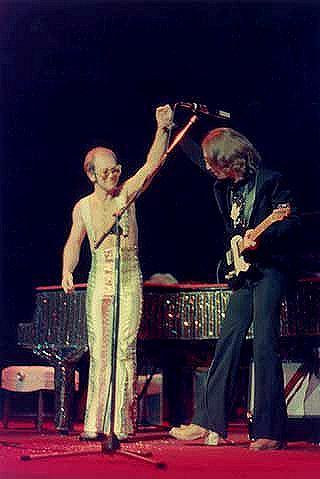
timesofindia.indiatimes.com
On Harrison’s death anniv, Beatles ashram glory lost in Rajaji wilderness
Shivani Saxena, TNN
Nov 28, 2014
Dehradun: George Harrison died on November 29, 2001, of lung cancer. He was cremated in Los Angeles and his ashes later scattered in the Ganga and Yamuna rivers. Much water has flowed down two of India's holiest rivers 13 years since.
But in a nondescript ashram, overrun by creepers of Uttarakhand's Rajaji National Park, one of the defining legacies of Harrison and The Beatles continues to live on.
Situated by the Ganga, the 'Maharishi Mahesh Yogi Ashram' of Rishikesh — known the world over as the Beatles ashram — is where the "band more famous than Jesus Christ" dabbled in transcendental meditation under the tutelage of Maharishi Mahesh Yogi in the spring of 1968. More famously, the Beatles ashram in Uttarakhand is where the iconic 'White Album' was born. The album sold 9.5 million copies in the United States alone.

 The Beatles in India
The Beatles in India
Today, a few Beatles devotees, mostly Western tourists, seek out the ashram to pay their respects. Chris Cheul from England is one of them. With a guitar in his hands and 'Dear Prudence' — one of the more memorable singles from the White Album — on his lips, Chris walks around the abandoned ashram, "soaking it all in".
"I am a die-hard Beatles fan," he says, "and I couldn't stop myself from coming here once I heard that the Beatles were here for three months and wrote some of their most beautiful songs."
Dear Prudence, he says, was a song specially written for the actress Mia Farrow's sister, Prudence, who had accompanied the Beatles to the ashram. "When she turned into a recluse, John Lennon wrote the song to make her understand that there was a life outside her meditation room and she should step out," he says. "The sun is up, the sky is blue. It's beautiful and so are you. Dear, Prudence, won't you come out to play," he trails off.
As per official records, the UP forest department, in 1961, leased out 15 acres for 20 years to Mahesh Yogi to set up the ashram. The lease expired in 1981 but Maharishi had moved base by then. The land was taken back and, two years later, handed to the national park. Locals claim it was abandoned around 1977 and has failed to gain the administration's attention ever since.
In May, the state's tourism department decided to draft a plan with the forest department to develop the place into a tourist spot. But nothing has changed on the ground. "The development of the ashram will definitely attract more visitors and foreign tourists as well in huge numbers," says Y K Gangwar, regional tourism officer. "But the project is still in a limbo as we are waiting for the necessary forest clearances to come through. The financial and administrative approval from the state government is yet to be given a go-ahead, which is proving to be another hindrance."
Entry is prohibited — a board hung at the gate sounds symbolic. A solitary guard mans the entry point. He opens the gates only if he finds your requests convincing. The white, igloo-shaped meditation cells as well as the lecture halls still stand. The shabby walls of the main hall, dank and gloomy, sport some lyrical graffiti — a shaky vote of confidence for the ashram from some loyal Beatles fans.
Much like Chris, many people visit Rishikesh just to visit the ruin. A couple from Australia who learned meditation from Maharishi Mahesh Yogi himself are among them. "The transcendental meditation works," says John as Sussane nods her head. "Otherwise we wouldn't have been practising it for the past 41 years. We came to the ashram in 1973. It was beautiful and serene, but now all that remains is overgrown vegetation. The Beatles association by itself attracts so many fans to this ashram even today. Something really needs to be done about it."
Antoine from France is visiting the ashram with his girlfriend, "a die-hard Beatle fan". He sighs, wondering why the local government would not set the place right and open its doors to music lovers around the world. "Many a time fans from other countries come to the ashram and try to collaborate to save its history by cleaning up the place, decorating and putting up graffiti on the walls, but since it is prohibited and the ashram falls in the forest region, we can't do much, apart from sneaking in here from time to time," he says.
Perhaps the way out is hidden in another popular remain from the spring of 1968. 'Dehradun', a catchy ode to the state capital, penned by Harrison himself, says: "Many roads can take you there, many different ways/One direction takes you years, another takes you days/Many people on the roads looking at the sights/Many others with their troubles looking for their rights...Dehra Dehra Dun."
 Members of the Beatles, from left, Ringo Starr, John Lennon, and Paul McCartney informally play music in Rishikesh, India in 1968
Members of the Beatles, from left, Ringo Starr, John Lennon, and Paul McCartney informally play music in Rishikesh, India in 1968
edition.cnn.com
Stella McCartney: 'My parents opened doors and closed minds'
From Maggie Lake, CNN and Phoebe Parke, for CNN
November 27, 2014
Editor's note: Leading Women connects you to extraordinary women of our time -- remarkable professionals who have made it to the top in all areas of business, the arts, sport, culture, science and more.
(CNN) -- She's the daughter of a Beatle, fashion designer of everyone from Madonna to the British Olympic team, recipient of a medal from Queen Elizabeth, and counts Kate Moss among her friends.
From all appearances, Stella McCartney's life has been a charmed one -- not that she necessarily sees it that way.
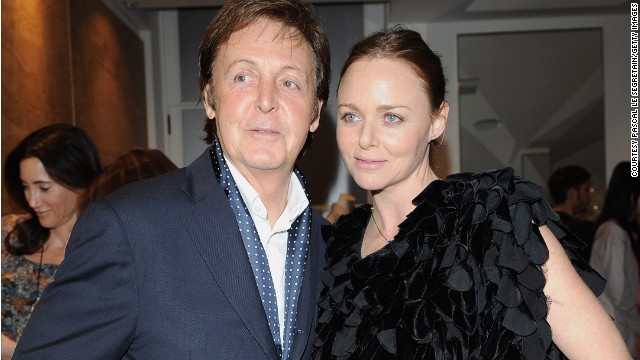 2013: McCartney's 'surreal upbringing'
2013: McCartney's 'surreal upbringing'
Fame has followed the second child of Paul McCartney and American photographer wife Linda from the moment she was born.
And it's been both a blessing and a hindrance.
As McCartney was awarded this year's prestigious Women's Leadership Award from the Lincoln Center Corporate Fund, CNN spoke to the mother-of-four about sustainability in a notoriously "unaccountable" fashion industry.
Parents' influence
CNN: You had very famous role models -- do you think that helped you, or do you think that was actually a hurdle?
McCartney: It certainly opened a lot of doors and certainly closed some minds. So I think there was a balance.
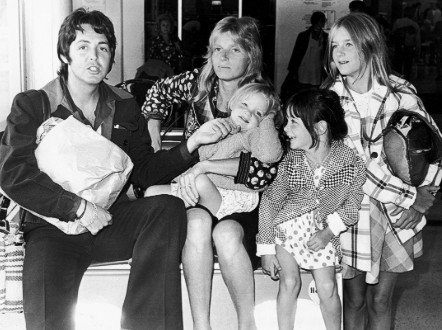 The McCartney family pose at Heathrow Airport in 1974. L-R Paul, Linda, Stella, Mary, and Heather.COURTESY DAILY EXPRESS/GETTY IMAGES
The McCartney family pose at Heathrow Airport in 1974. L-R Paul, Linda, Stella, Mary, and Heather.COURTESY DAILY EXPRESS/GETTY IMAGES
CNN: What do you think was the biggest inspiration you got from your mother, Linda McCartney?
M: I learned a lot from her ethics. Both my mum and dad [former Beatle, Paul McCartney] are known to be vegetarians, world rights activists and environmentalists, and that definitely came into my place of work.
Once you have children it adds another layer of responsibility to what you're doing. You have to be a role model to them so it makes you question your actions -- in a good way.
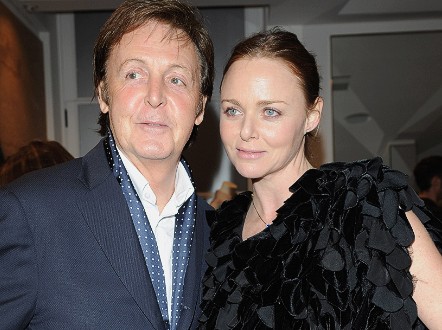 Paul and Stella McCartney attend the Stella McCartney Paris store opening in Paris in 2009.COURTESY PASCAL LE SEGRETAIN/GETTY IMAGES
Paul and Stella McCartney attend the Stella McCartney Paris store opening in Paris in 2009.COURTESY PASCAL LE SEGRETAIN/GETTY IMAGES
Biggest Challenge
CNN: What is the biggest challenge you've encountered getting where you are now?
M: Early on, when I wanted to go back to London and start my own fashion house, a very well thought-of executive in the industry said to me: "Name one female designer that's come from Great Britain that has had any kind of global success."
I wanted to prove him wrong. Obviously there have been great women from Britain in design, but actually there are fewer than I thought. So that was a bit of a hurdle for me.
From day one I've never worked with leather or fur. I don't work with PVC, and I'm very conscious in the sourcing and manufacturing of fashion. That's a hurdle, that's a challenge, but it's a worthwhile one.
CNN: Do you feel a lot of pressure from the industry because you chose to go down the "sustainable fashion" road?
M: It's been difficult, it continues to be difficult, but I'm OK with difficult, it's what keeps me on my toes. I've had people say to me: "You'll never sell handbags, you don't work with leather and leather is luxury."
To me it's the complete opposite, leather is everywhere, it's so cheap a material, it's so mass produced. Over 50 million animals a year are killed just for fashion. For me it doesn't have a luxury element to it.
CNN: So you're comfortable flipping that notion on its head, that leather is luxury?
 Stella McCartney poses in her Spring 2015 collection at the Stella McCartney Spring 2015 Presentation and Party at Roppongi Hills in Tokyo in 2014.COURTESY ATSUSHI TOMURA/GETTY IMAGES
Stella McCartney poses in her Spring 2015 collection at the Stella McCartney Spring 2015 Presentation and Party at Roppongi Hills in Tokyo in 2014.COURTESY ATSUSHI TOMURA/GETTY IMAGES
M: Lots of things have been around for a long time, that doesn't mean they have to stick around forever. When you're in design it's your job is to change, to push, to modernize.
The fashion industry, is not really as accountable for some reason. We're not expected to have to answer to the fact that it's not sustainable to kill that many animals for shoes and bags. And it's not necessary! Ninety percent of the people who come to my stores have no idea I don't work with leather.
Being told no
CNN: You get very steely when you talk about people telling you you can't do something.
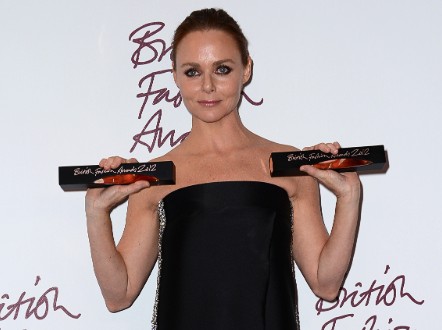 McCartney, winner of Designer of the Year 2012, poses at the British Fashion Awards 2012.COURTESY IAN GAVAN/GETTY IMAGES
McCartney, winner of Designer of the Year 2012, poses at the British Fashion Awards 2012.COURTESY IAN GAVAN/GETTY IMAGES
M: Doesn't everyone, who likes being told they can't do something? Anyone can do anything they want, if they really want it.
I'm not going to pretend I didn't come from a privileged starting point. I'll always admit that it was easier for me to question people telling me I couldn't do something because I had a pretty nice place to fall back on. So maybe that afforded me a little more spark and fight.
I'm learning as I get older, that you don't have to try to fight everything from a man's place. I guess I got here for a reason, it wasn't because I was a woman.
www.entertainment-focus.com
Julian Lennon announces Christmas single
By Pip Ellwood
Posted on November 26, 2014
Julian Lennon is releasing a re-worked version of Stephen Emmer and Neil Crossley’s Sleep For England in time for Christmas.
The original version of the song featured on Emmer’s critically acclaimed album International Blue and has been given the Christmas treatment incorporating sleigh bells and a boys choir. Sleep For England is produced by Tony Visconti and will be released on 15th December 2014.
Sleep For England is inspired by classic alternative Christmas songs such as Jona Lewie’s Stop The Cavalry and Happy Xmas (War Is Over) by John Lennon. All proceeds from the single go to Julian’s charity The White Feather Foundation, which tackles environmental and humanitarian issues. In conjunction with global partners it helps to raise funds for the betterment of all life and honor those who really have made a difference. 1.2 billion people are without clean water, something we take for granted in the Western World. Therefore all single proceeds will be going towards the production of more clean water, where every penny can help save thousands of lives.
Sleep For England will be added to an extended version of the International Blue’ album, which will get a physical release on CD on January 1st 2015

somethingelsereviews.com
Paul McCartney: Recording Sessions [1969-2013], by Luca Perasi: Books
by Nick DeRiso
November 25, 2014
The digital age giveth, in terms of portability, ala carte curating and stunning affordability. But it also taketh away — at least for those who coveted the breezy knowledgeabity that liner notes once provided. Connections could be made, across a career like Paul McCartney’s, if you paid attention.
Paul McCartney- Recording Sessions [1969-2013] 2For instance, even if you never knew the details of Geoff Britton’s blink-and-you’ll-miss-it mid-1970s tenure in Wings, the archealogical details could be found on the inner sleeve of Venus and Mars — which showed Britton drumming away on a trio of songs, including the crunchy “Letting Go,” while Joe English handled the rest. Similarly, the genesis of Tug of War and Pipes of Peace in the Wings era was illustrated by Denny Laine’s presence — years after the group’s demise — on songs like “Wanderlust” and “Average Person.”
![Paul McCartney- Recording Sessions [1969-2013] 2](http://somethingelsereviews.com/wp-content/uploads/2014/11/Paul-McCartney-Recording-Sessions-1969-2013-2-198x305.jpg)
How often did David Gilmour work with McCartney over the years, beginning with 1979’s “Rockestra Theme”? Elvis Costello? Former members of the Pretenders? Former members of the Beatles? His current band? The albums would tell you.
Not anymore. With the rise of digital downloads and streaming, we’ve never had more access to music — and less access to the nuts and bolts of how it was made. Perhaps sessions details, the dates and times and places and producers and sidemen, don’t have the currency they once had. Maybe that’s a sad byproduct of the DiY ProTools age.
But McCartney, the subject of Luca Perasi’s thorough and essential song-by-song guide, appropriately titled Paul McCartney: Recording Sessions [1969-2013] (L.I.L.Y. Publishing), isn’t of that age — even if he’s still making music in it. Perasi’s book takes all of that in, from 1970’s McCartney to 2013’s New, offering an exhaustive, detailed and largely opinion-free deep dive that retraces every step — with all of the specificity the ravenous album-era fan requires.
There are a few caveats for the completists: Perasi’s ground rules were that only songs written by Paul McCartney and featured under his name, Wings or the Fireman were included. Solo co-writes with Denny Laine, Eric Stewart and Elvis Costello made the cut, but not earlier collaborations with John Lennon. (That leaves out the bulk, say, of Give My Regards to Broadstreet. But, really, that’s not such a bad thing.) The translation from Perasi’s native Italian to English is occasionally imperfect. And lastly, not every single sideman could be tracked down, unfortunately.
More notable, though, is what’s there, even beyond the meticulously constructed chronology. As Perasi sorts through what becomes nearly 400 individual tracks, he brings in a series of voices from Paul McCartney’s solo career to provide every-day insight into his musical life and times — and that elevates the project past facts and dates.
Included are former Wings members Denny Seiwell and Laurence Juber; longtime engineer Tony Clark (who writes the forward for Paul McCartney: Recording Sessions [1969-2013]); as well as intriguing, lesser-known voices like Bill Wolfer, who performed on McCartney’s last No. 1 U.S. single, “Say Say Say”; and Brent Fischer, son of the late orchestrator Clare Fischer, whose work appeared on “Distractions” from Flowers in the Dirt.

www.radiointereconomia.com
BAJO LA LLUVIA, PAUL MCCARTNEY CONQUISTA A LOS BRASILEÑOS SAO PAULO
26/11/2014
Sao Paulo, 26 nov.- Con una puesta en escena envidiable a sus 70 años, el ex-Beatle Paul McCartney conquistó nuevamente a los brasileños en un concierto en Sao Paulo en el que el mítico músico mezcló el repertorio clásico del cuarteto de Liverpool con un sorprendente "rock and roll".
"Es bueno estar de vuelta", dijo McCartney en portugués con acento británico durante el primer día de espectáculo en la capital paulista.
El cantante interpretó 38 canciones durante cerca de dos horas y media en el nuevo estadio del club de fútbol Palmeiras, el Allianz Parque, y se ganó a los cerca de 45.000 espectadores que desafiaron la intensa lluvia que azotó la capital paulista.
Vestido con su tradicional traje azul, McCartney abrió el espectáculo con una canción de la era Beatle, "Eight Days a Week", uno de los primeros éxitos de la banda, lanzado en 1964, con el que incendió al público en los primeros acordes.
Uniformados con camisetas de su estrella, miles de fans entonaron todas las canciones de McCartney y se emocionaron especialmente con el estribillo de clásicos como "Let it Be" y "Hey Jude", estrofas que fueron dirigidas con maestría por el veterano músico.
McCartney también mantuvo vivo el recuerdo de los eternos muchachos de Liverpool con la interpretación de "All My Loving", "Paperback Writer", "Eleanor Rigby" y "The Long and Winding Road", entre otras.
Pero fue con "Ob-La-Di, Ob-La-Da" cuando el músico vio a la platea entregar el resto y lanzar globos de colores hacia el cielo. McCartney sintió el calor de los brasileños y les retribuyó con "Black Bird".
Echando mano del repertorio de "Wings" (banda que formó con su primera mujer Linda McCartney tras la disolución de los Beatles), el artista mostró que es el maestro del tradicional rock and roll con "Band on the Run" y del romanticismo con "Maybe I’m Amazed".
La nueva gira también trajo sencillos de su último trabajo, "New (2013), como "Save us", "Queenie Eye" y "My Valentine", esta última dedicada a su mujer, Nancy.
Como de costumbre en sus últimas visitas a Brasil, el cantante inglés arriesgó con varias frases en portugués como "Pô, meu, aqui tá bombando", una forma bastante coloquial de referirse al ambiente animado que se respiraba en el estadio.
McCartney homenajeó a su amigo John Lennon con la canción "Here Today" y a Georde Harisson con "Something". Para cerrar su actuación, el artista entonó "The End".
El ex-beatle completó este martes quince conciertos en el país desde 2010. Este año actuó por primera vez en el estado de Espírito Santo y en Brasilia, regresó a Río de Janeiro y demostró una vez más que su música se mantiene viva de generación en generación. EFE
g1.globo.com
FOTOS: Paul McCartney em São Paulo
Ex-beatle faz shows na capital paulista nesta terça (25) e na quarta (26) no estádio do Palmeiras, a Allianz Parque.
25/11/2014
Paul McCartney em São Paulo
Marcelo Brandt/G1
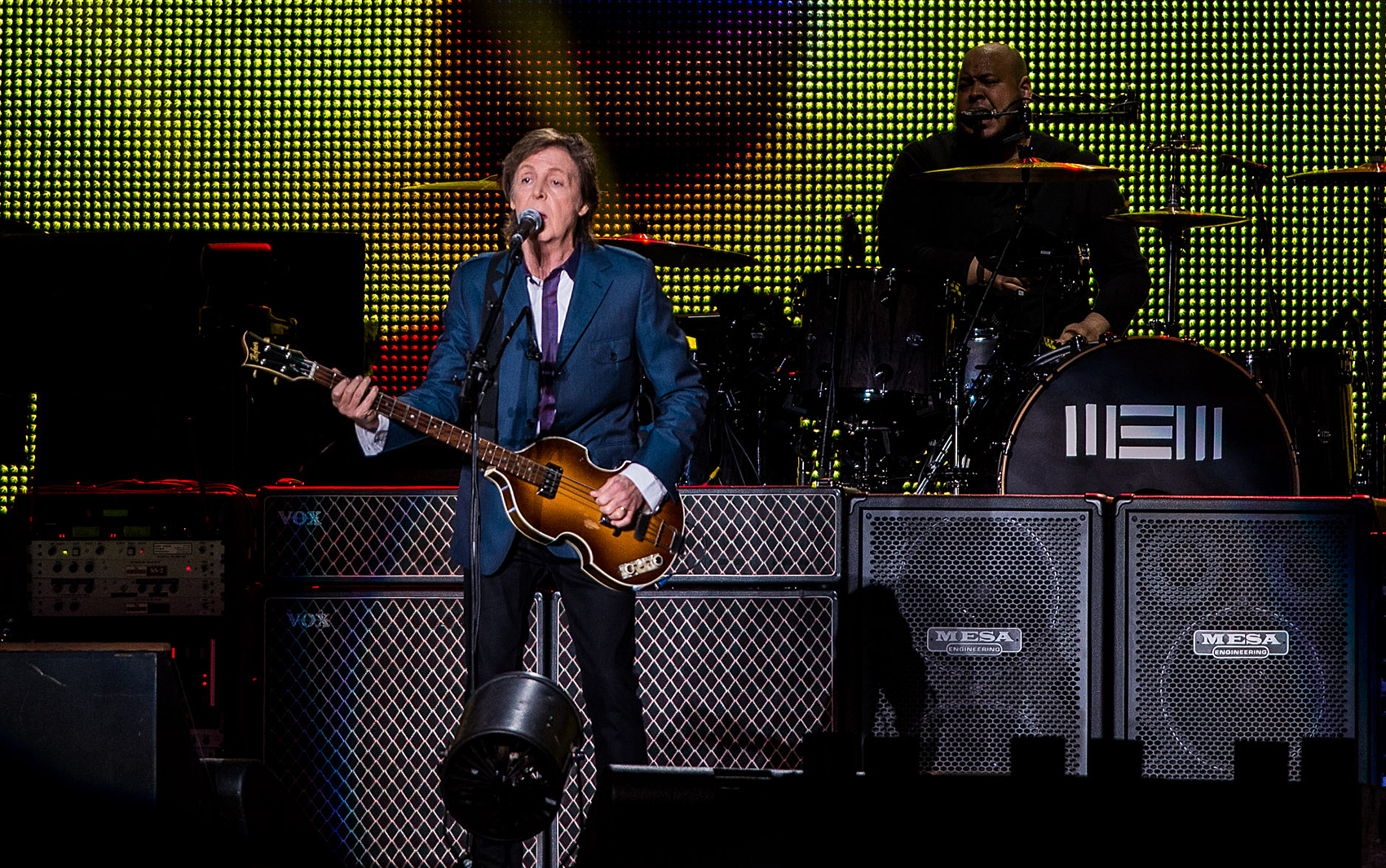
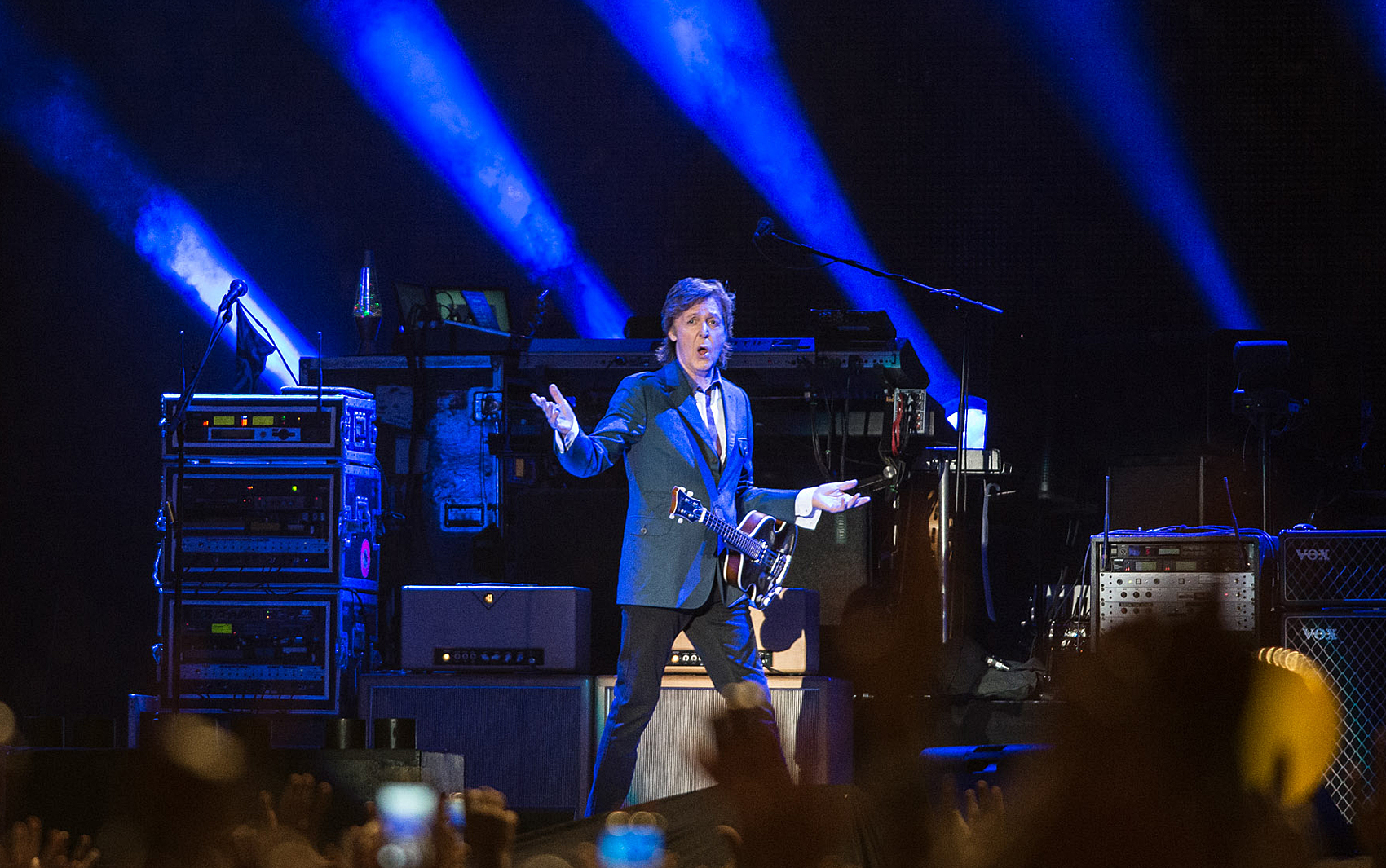
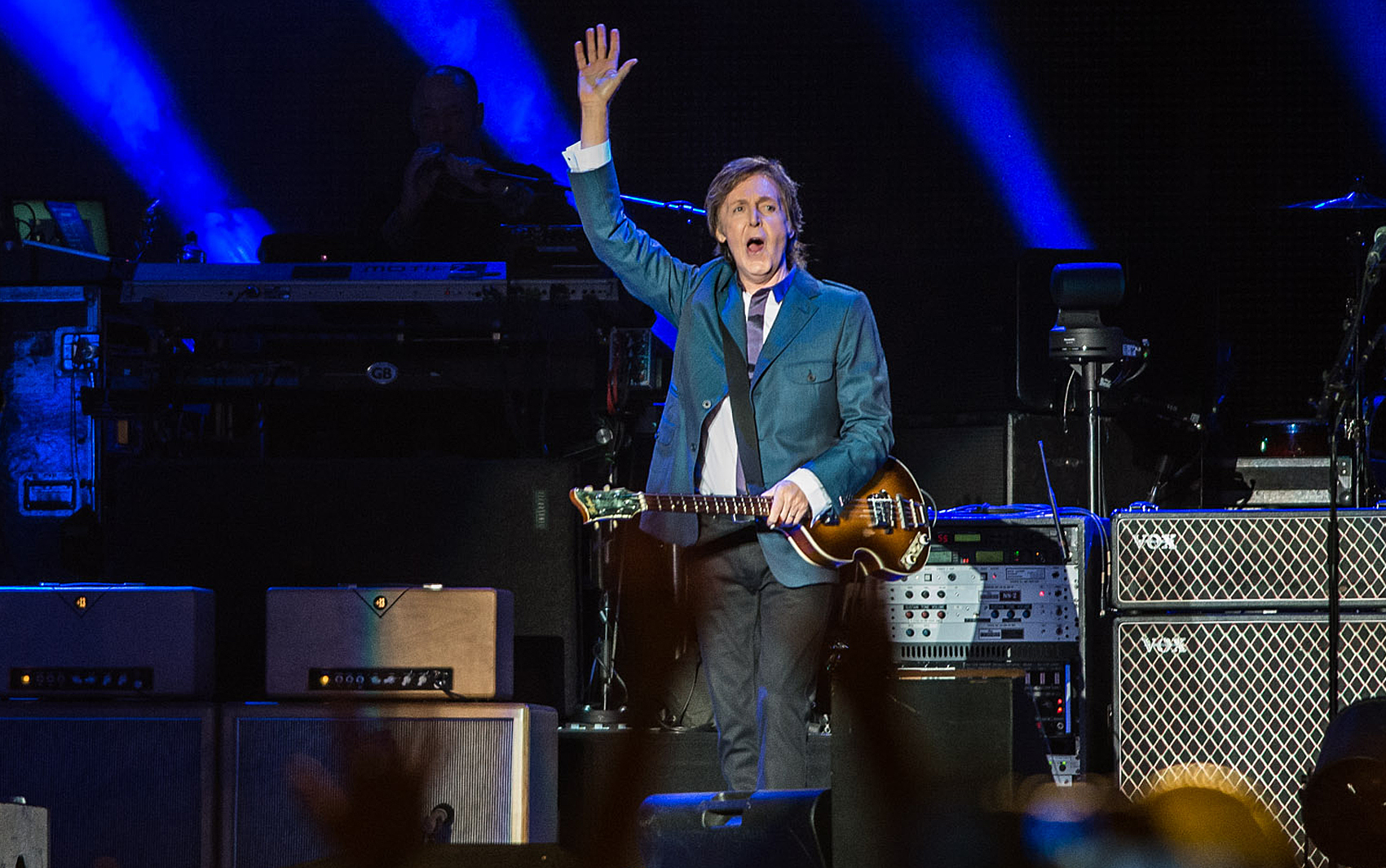

Paul McCartney se apresenta na Arena do Palmeiras em São Paulo nesta terça-feira (25)
Marcelo Brandt/G1
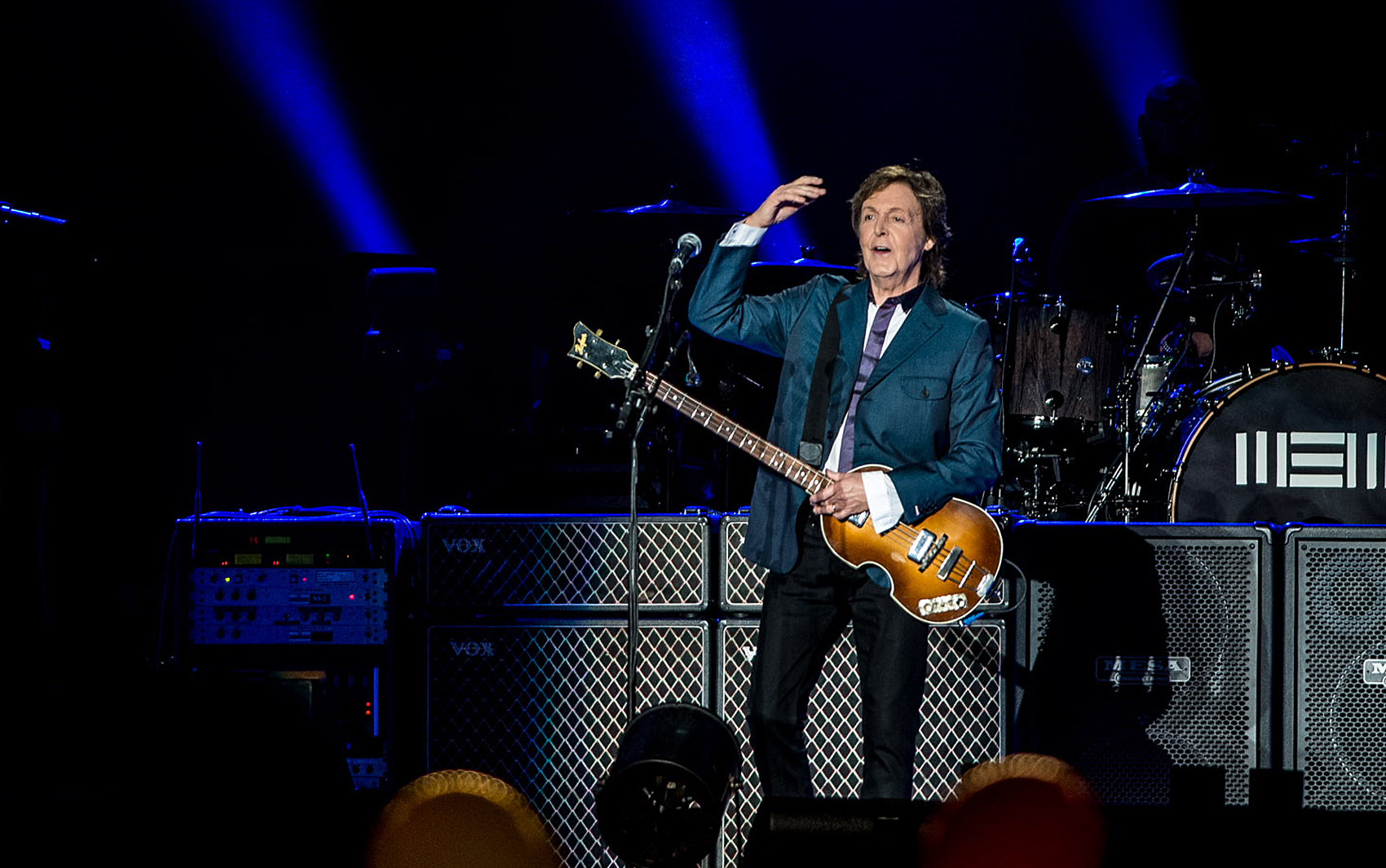
Paul McCartney em São Paulo
Marcelo Brandt/G1

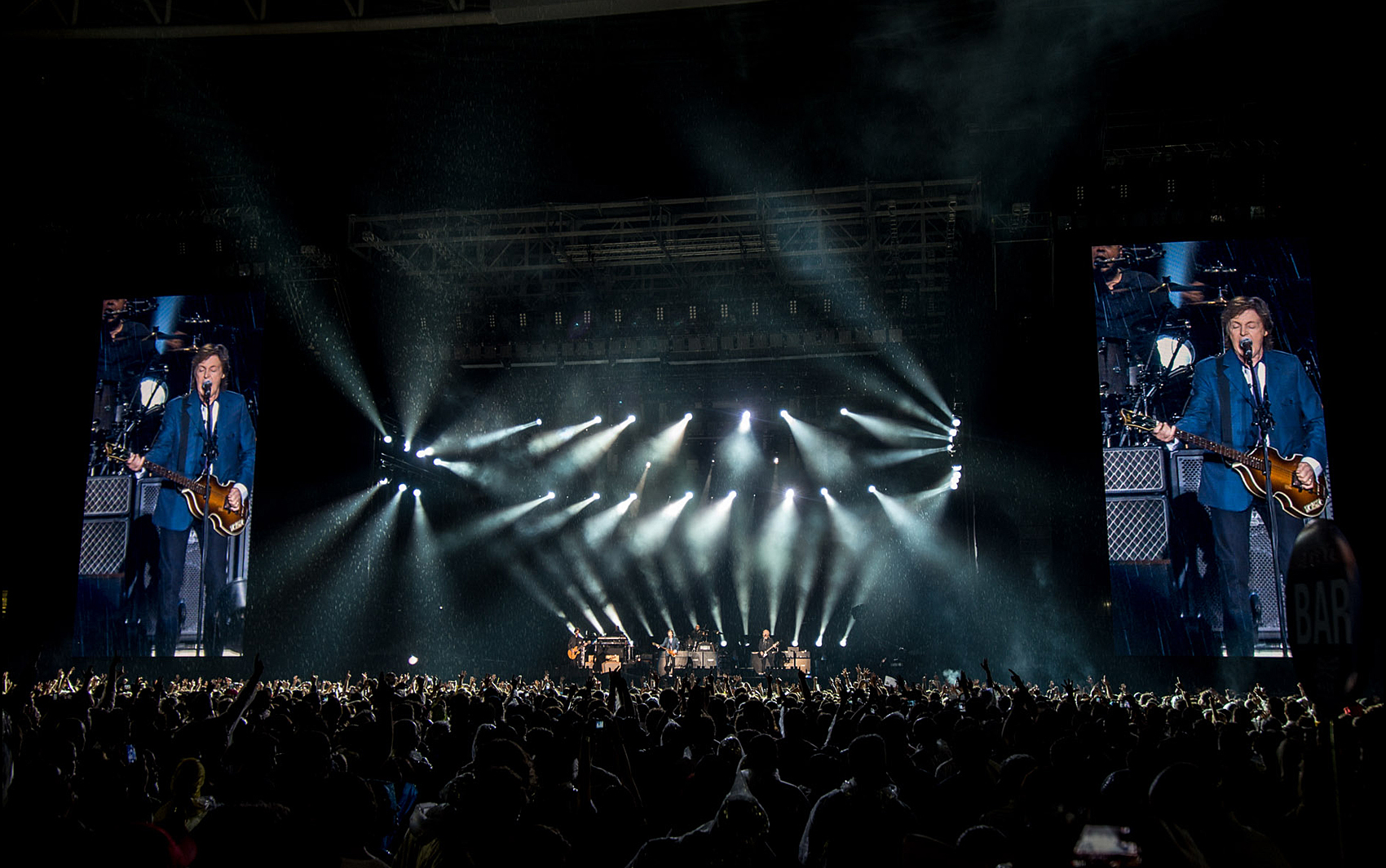
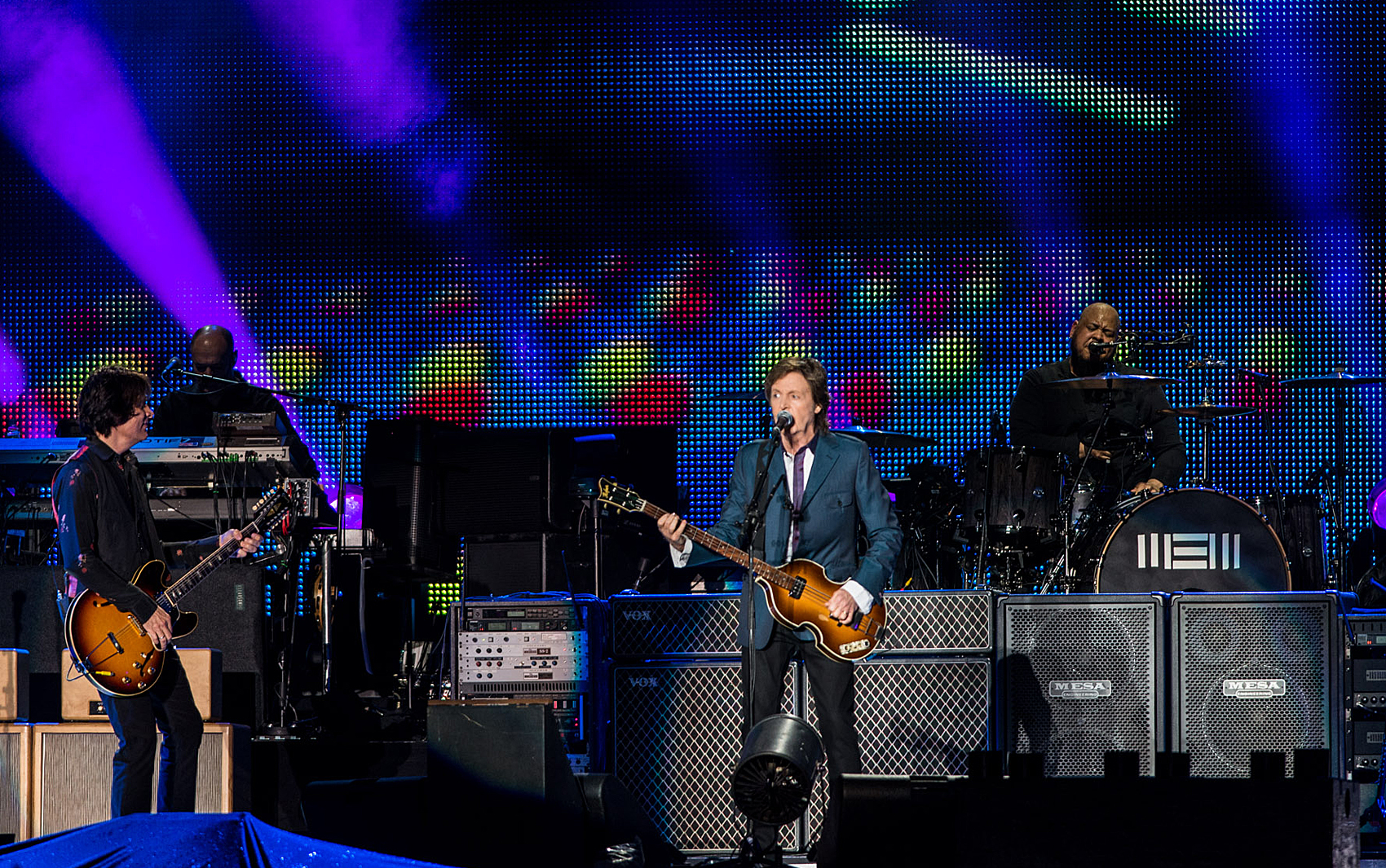
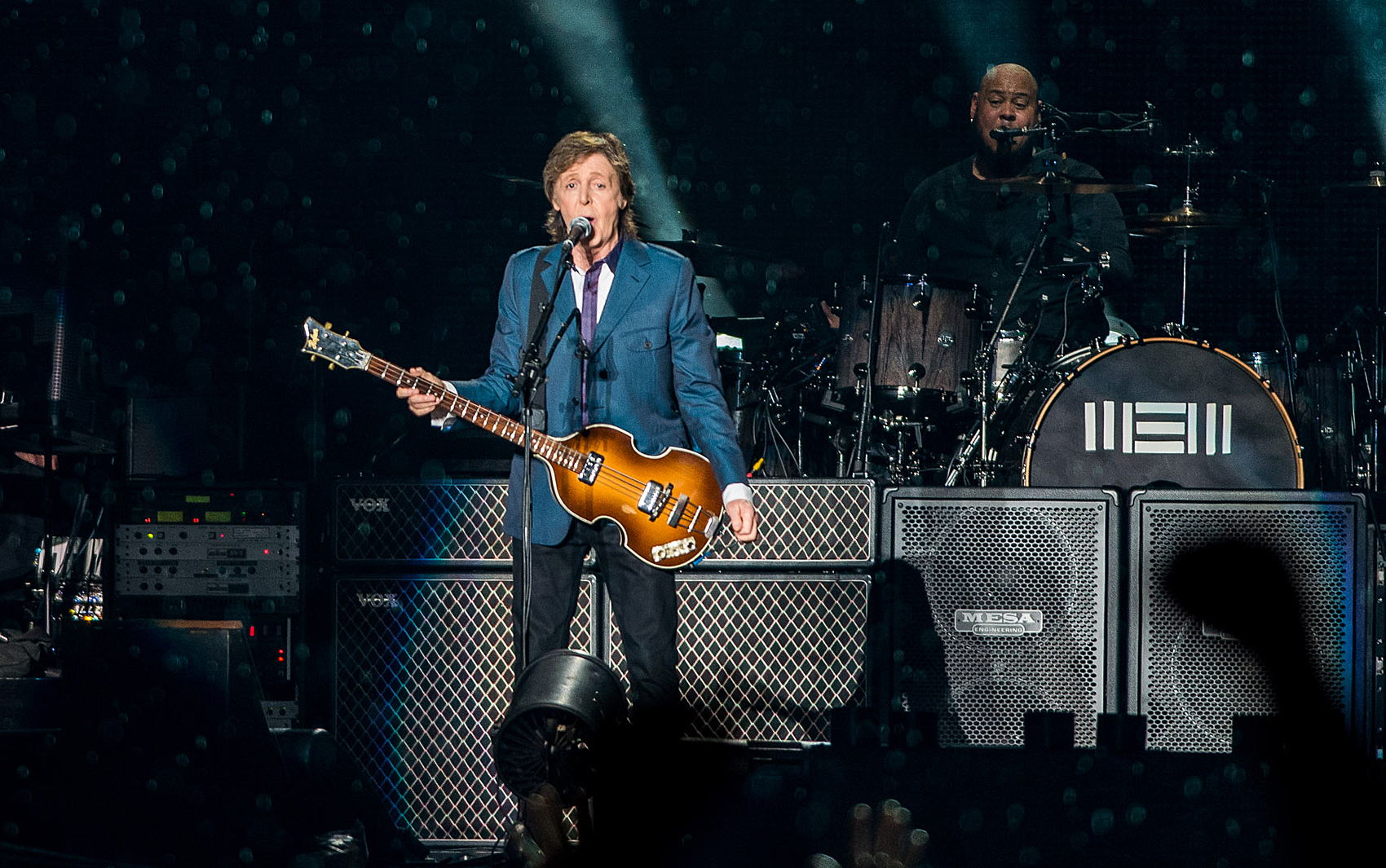
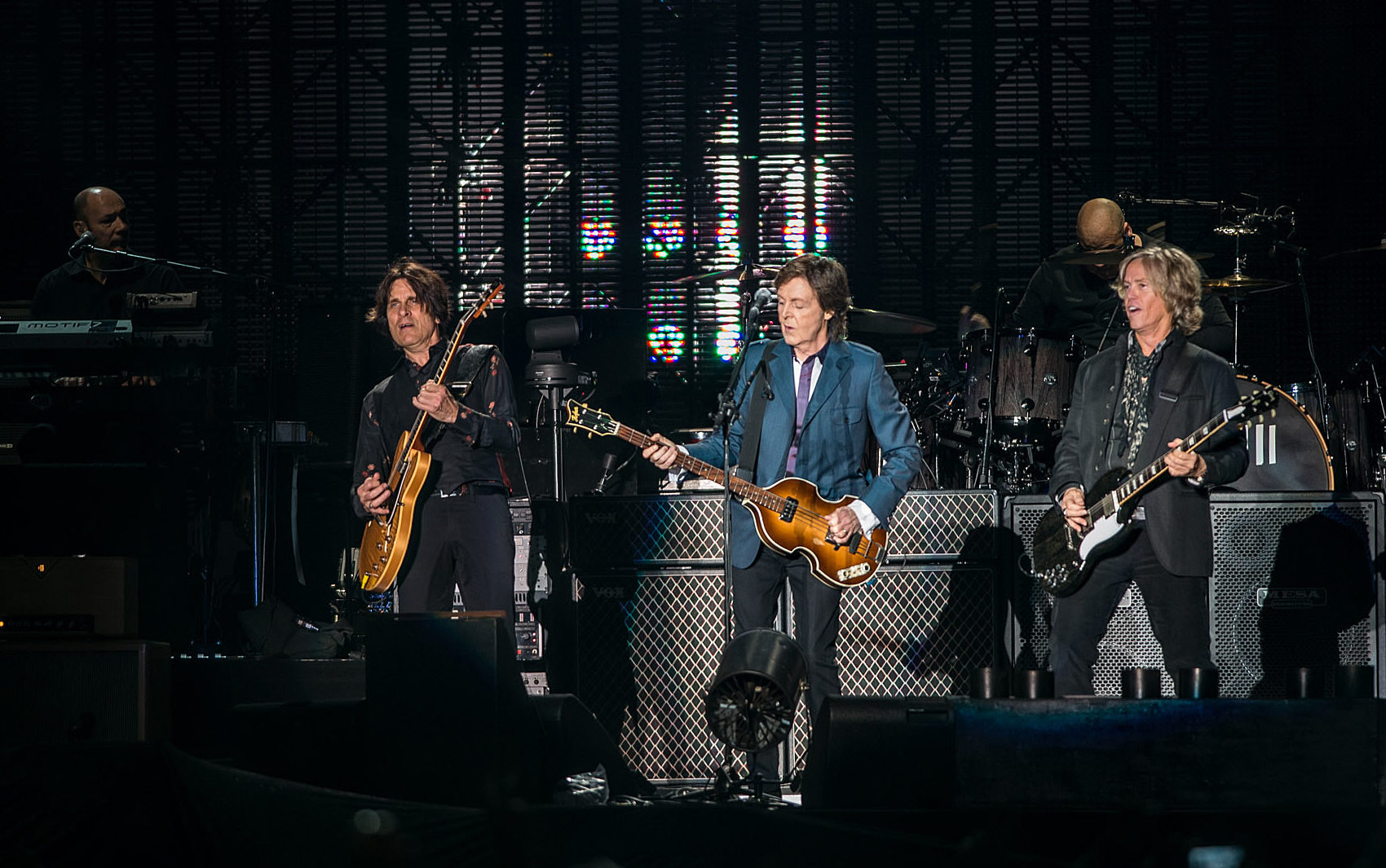

Chegada do beatle Paul McCartney no estádio Allianz Parque, na Zona Oeste de São Paulo, leva o publico ao delírio
Marcelo D. Sants/Frame/Estadão Conteúdo
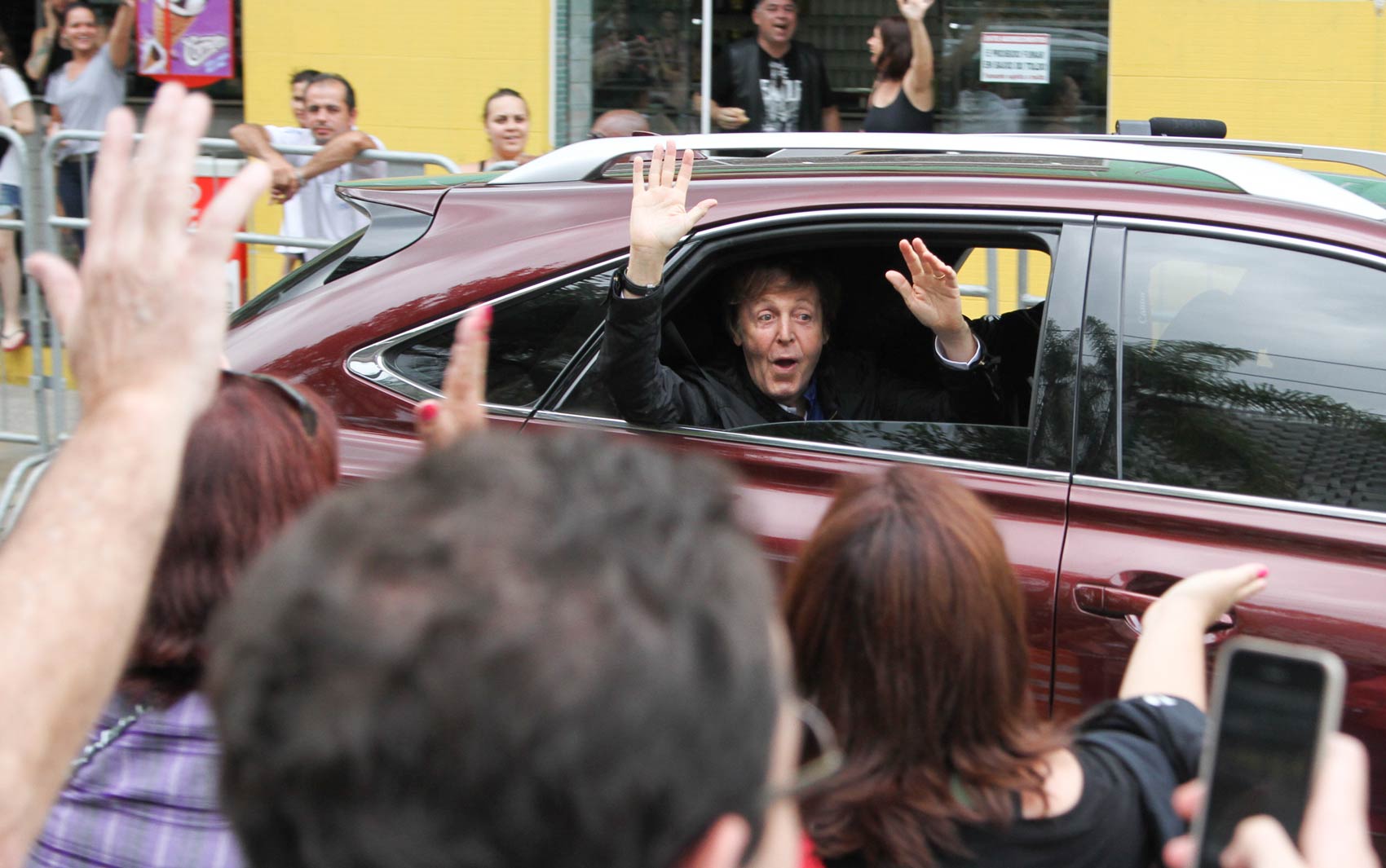
Vendedor oferece capas de chuva na fila para o show do Paul McCartney, na Zona Oeste de São Paulo
Marcelo Brandt/G1
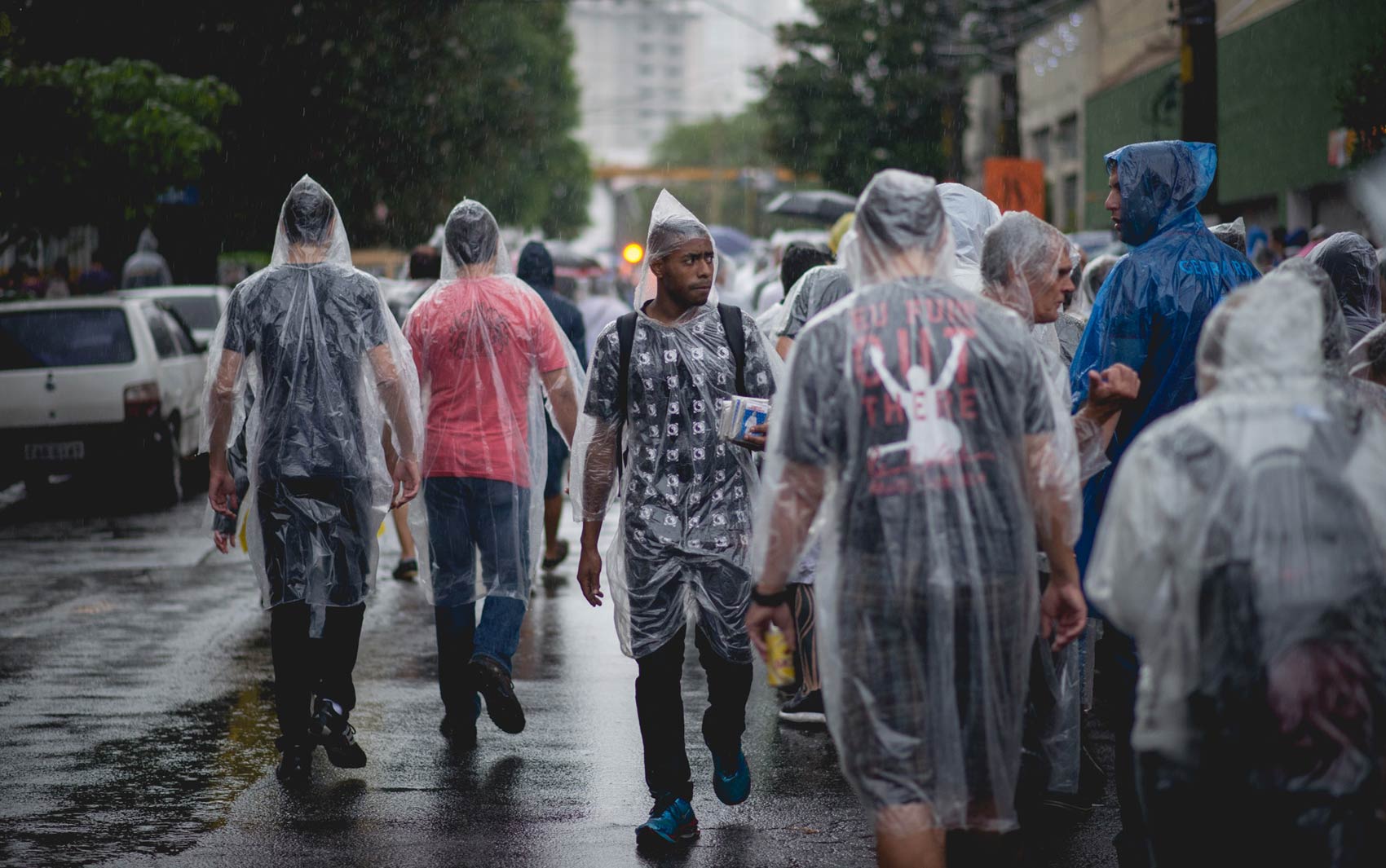
Fãs de Paul McCartney usam capas de chuva na fila para o primeiro dos dois shows do ex-Beatle em São Paulo
Marcelo Brandt/G1
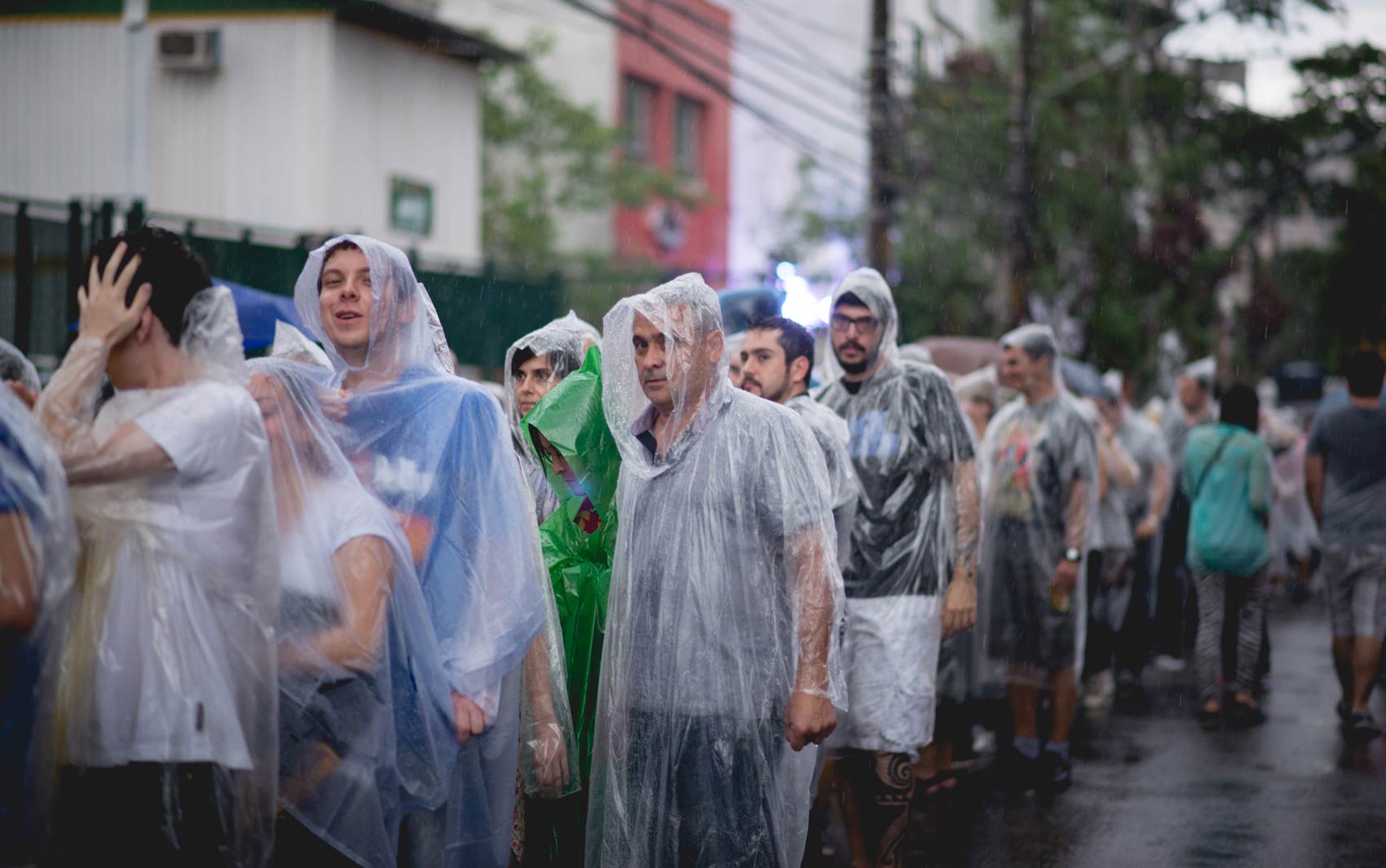
Chegada do beatle Paul McCartney no estádio Allianz Parque, na Zona Oeste de São Paulo, leva o público ao delírio
Marcelo D. Sants/Frame/Estadão Conteúdo
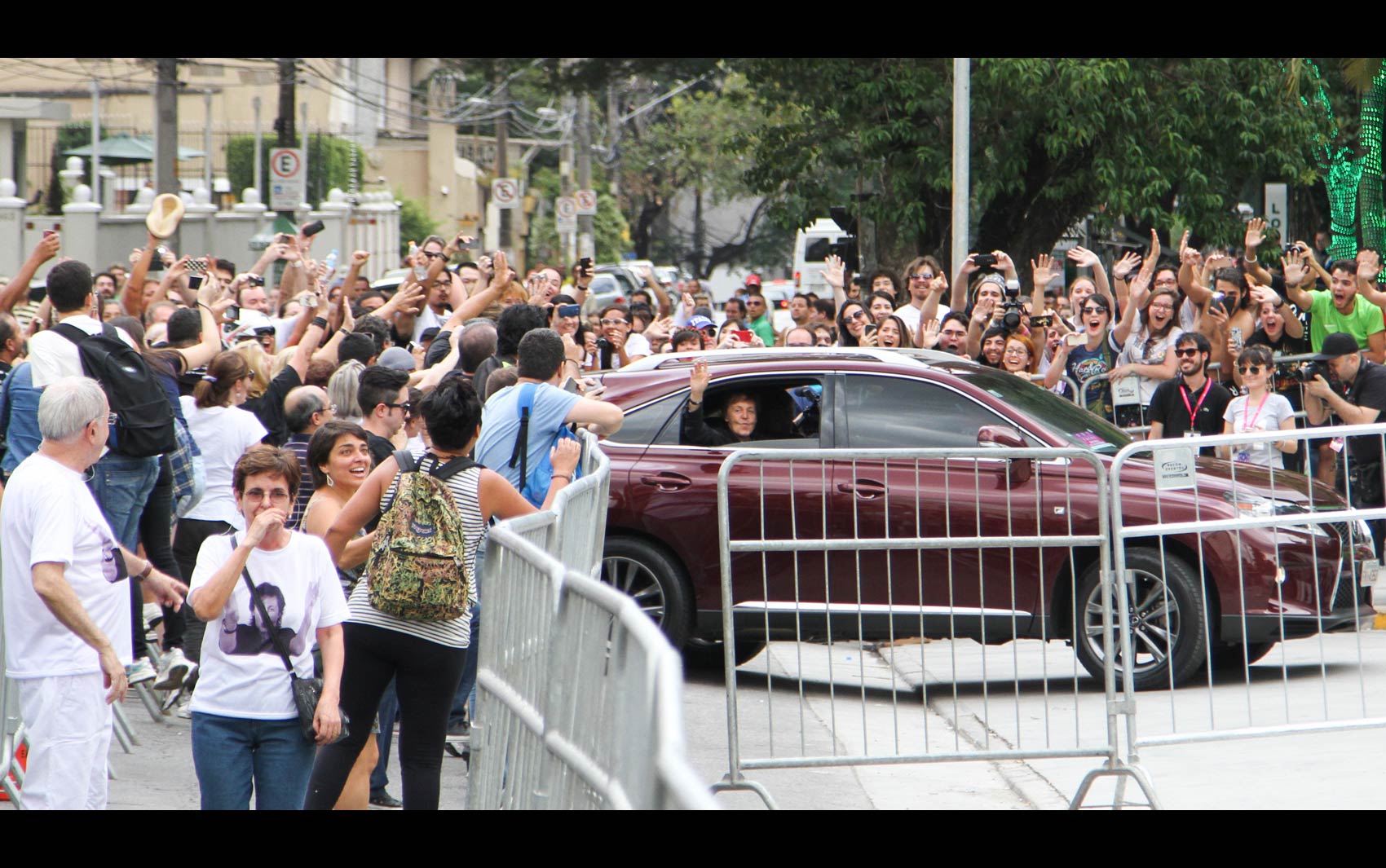
Trânsito intenso na Avenida Antártica, no acesso ao Estádio Allianz Parque, na Zona Oeste de São Paulo, onde acontece o show do ex-Beatle Paul McCartney
Fábio Vieira/Código19/Estadão Conteúdo

www.ofuxico.com.br
Paul McCartney se apresenta em São Paulo
Ex-beatle lotou o recém inaugurado Allianz Parque
Por: O Fuxico
Foto: Manuela Scarpa/Photo Rio News
26/11/2014
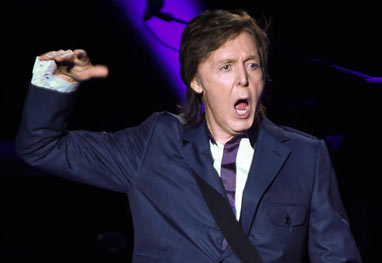
Paul McCartney lotou o recém inaugurado Allianz Parque, estádio do Palmeiras, na primeira das duas noites de shows em São Paulo. Nesta terça-feira (25), o ex-beatle fez o penúltimo show da turnê no Brasil em 2014.
Os 45 mil ingressos para o show se esgotaram no primeiro dia de vendas, o que levou à confirmação de uma apresentação extra neste dia 26. McCartney trouxe ao país a turnê Out there!, em que apresenta clássicos dos Beatles e dos Wings.
Nas duas semanas anteriores, o astro passou por Espírito Santo, Distrito Federal e Rio de Janeiro.
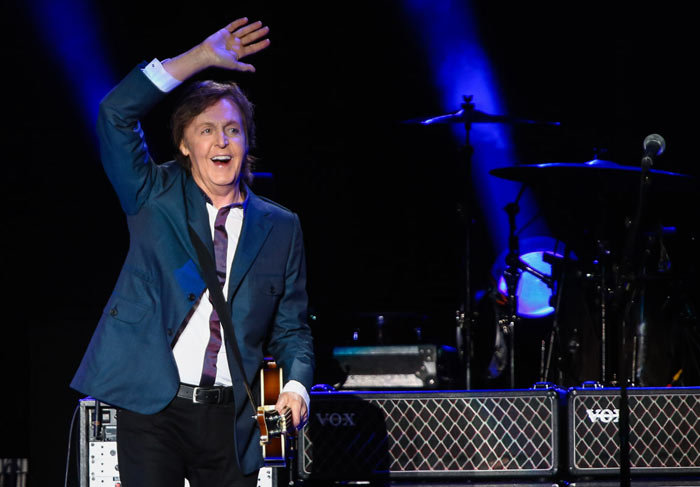
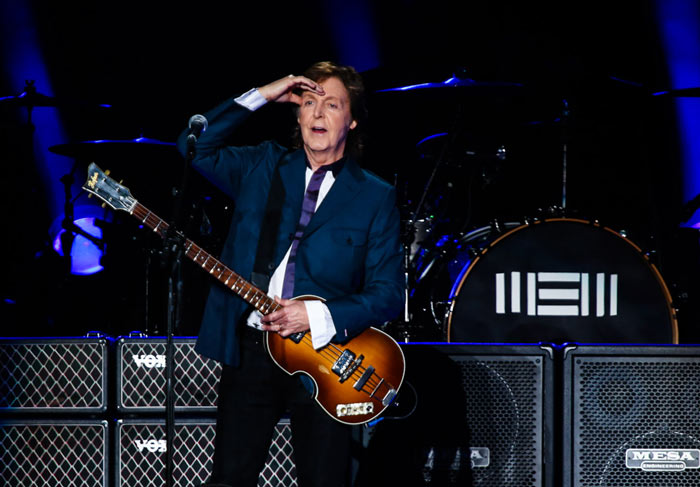
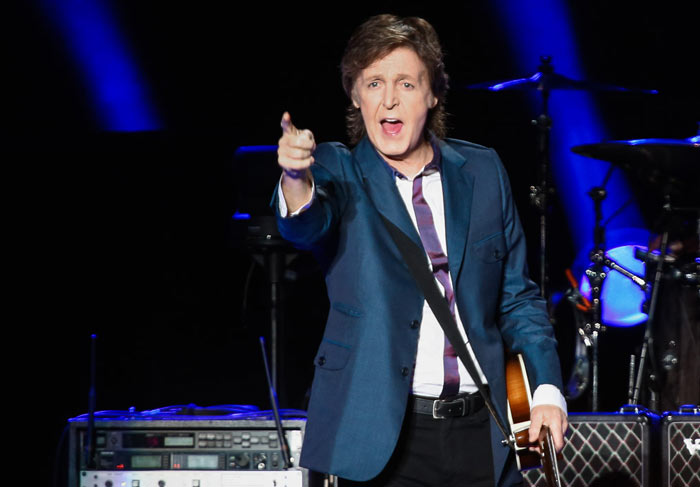
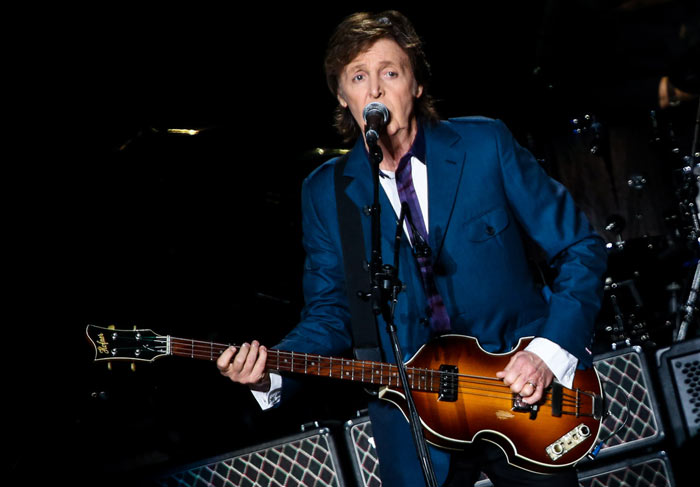
www.liverpoolecho.co.uk
John Lennon guitar misses out on £400,000 reserve at auction
Gretsch 6120 Chet Atkins Nashville model hollow body guitar reached £380,000 in London
By Liam Murphy
Nov 24, 2014
A classic guitar used by John Lennon, during the recording for Paperback Writer, in 1966, failed to sell at auction when it did not reach its £400,000 reserve.
Bids for the Gretsch 6120 Chet Atkins Nashville model hollow body guitar reached £380,000 at Le Méridien Hotel, in Piccadilly, London.
It is now hoped a private sale can be arranged, according to the managing director of TracksAuction.com Paul Wane, who said it had been mainly private collectors bidding for the guitar.
Mr Wane said: “It didn’t reach its reserve, which was £400,000.”
The guitar, which had been the star of the auction and had been predicted to sell for between £400,000 and £600,000, was given to John’s cousin, David Birch, when he visited the Lennons in their Weybridge home in late 1967.
 John Lennons Gretsch 6120 Chet Atkins Nashville model hollow body guitar which failed to reach its £400,000 reserve at auction
John Lennons Gretsch 6120 Chet Atkins Nashville model hollow body guitar which failed to reach its £400,000 reserve at auction
According to the auction description, David had asked his famous relative if he had a guitar that he no longer wanted as he was trying to get a group together with some mates at the time.
He said: “I was just cheeky enough to ask John for one of his spare guitars.
“I had my eye on a blue Fender Stratocaster that was lying in the studio but John suggested and gave me the Gretsch while we were talking.”
 John Lennons Gretsch 6120 Chet Atkins Nashville model hollow body guitar which failed to reach its £400,000 reserve at auction
John Lennons Gretsch 6120 Chet Atkins Nashville model hollow body guitar which failed to reach its £400,000 reserve at auction
The Gretsch 6120, serial number 53940, has been owned by David Birch ever since.
The auctioneers say that guitars owned and played by John Lennon from the Beatles period are extremely rare in themselves “but a Lennon-owned guitar which has the history of a close family connection, unquestionable legal title and clear-cut picture identification is rare beyond belief”.
David had previously loaned the Gretsch guitar to The Beatles Story in 2010, and later to the Rock And Roll Hall Of Fame in Cleveland, Ohio, in 2012.
The guitar was used at the time the Beatles were recording Paperback Writer, which was the fourth track recorded at the Revolver sessions at EMI’s studios, in Abbey Road.
Mr Wane said the guitar could still be sold, and added: “There might be a private sale following the auction.”
However, Mr Wayne said other items had sold well, including an early edition of Merseybeat which said was sold for “an incredible” £9,000.

g1.globo.com
Paul McCartney anda de bicicleta no Parque da Cidade, em Brasília
Ex-Beatle acenou para fãs e pareceu se divertir, apesar do mau tempo.
Músico se apresenta neste domingo, às 20h, no Estádio Mané Garrincha.
Lucas Nanini
Do G1 DF
22/11/2014
Em Brasília desde a manhã deste sábado (22), o ex-beatle Paul McCartney aproveitou para andar de bicicleta pelo Parque da Cidade. Apesar do tempo nublado, o músico pareceu se divertir com o passeio, acenou para fãs e permaneceu no local até o início da tarde.
 O ex-beatle Paul McCartney acena para fãs durante passeio de bicicleta no Parque da Cidade de Brasília (Foto: Carlos Silva/CB/D.A. Press)
O ex-beatle Paul McCartney acena para fãs durante passeio de bicicleta no Parque da Cidade de Brasília (Foto: Carlos Silva/CB/D.A. Press)
Paul McCartney sobe ao palco do Estádio Nacional Mané Garrincha neste domingo (23), às 20h. A apresentação faz parte da turnê "Out There!". É o primeiro show do ex-beatle na capital brasileira.
O cantor apresenta clássicos dos Beatles e dos Wings, além de sucessos da carreira solo e canções do disco "New", de 2013. Até esta sexta, foram vendidos 80% dos 45 mil ingressos.
O músico desceu na Base Aérea de Brasília às 8h30 e foi direto para o hotel Meliá Brasil 21, no Setor Hoteleiro Sul. Paul está hospedado em uma suíte de 300 m², com ampla sala de jantar. A equipe do músico está acomodada em 110 apartamentos, em três andares do edifício.
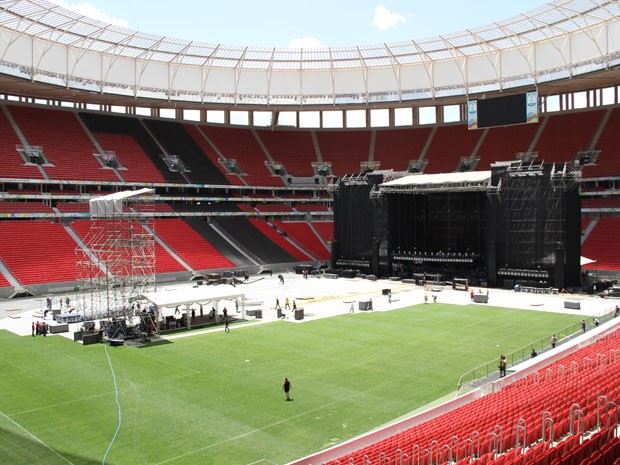 Montagem do palco para o show de Paul McCartney no Estádio Mané Garrincha (Foto: Vianey Bentes/TV Globo)
Montagem do palco para o show de Paul McCartney no Estádio Mané Garrincha (Foto: Vianey Bentes/TV Globo)
No chão do hotel foi instalada uma faixa de pedestres, em referência à capa do disco "Abbey Road", último álbum gravado pelos Beatles, em 1969.
O músico exigiu que o cardápio servido seguisse a dieta vegana, sem nenhum tipo de alimento de origem animal. Um chef de cozinha veio especialmente de Londres para atender ao cantor e compositor.
Paul McCartney faz show e leva público ao delírio, espírito santo (Foto: Edson Chagas/A Gazeta)
O ex-beatle Paul McCartney
(Foto: Edson Chagas/A Gazeta)
Outra exigência foi a retirada dos móveis de couro do local. Um dos espaços do hotel foi transformado em academia. Ele pediu uma esteira, uma bicicleta, colchonete e pesos.
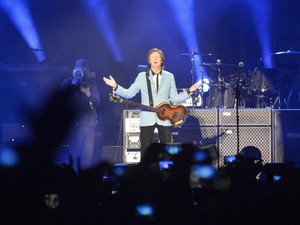 O ex-beatle Paul McCartney
(Foto: Edson Chagas/A Gazeta)
O ex-beatle Paul McCartney
(Foto: Edson Chagas/A Gazeta)
Estrutura
Para montar o palco, foi necessária uma superestrutura, com peso estimado em 150 toneladas: 42 carretas ocupam o subsolo da arena, cheias de equipamento. Acompanhado por telões laterais de altura igual a um prédio de oito andares, o palco tem comprimento de 70 metros. Os trabalhos para organizar a estrutura começaram no último dia 13.
Para este domingo, o Metrô do Distrito Federal vai funcionar em horário ampliado, com embarque a partir da estação Central das 7h às 23h30. Nas outras estações, o embarque pode ser feito até as 19h, como ocorre normalmente.
Paul McCartney em Brasília
Data: 23 de novembro, a partir das 20h
Local: Estádio Nacional de Brasília Mané Garrincha
Classificação etária: 16 anos
Ingressos (valores de meia-entrada)
Premium: R$ 350
Pista: R$ 150
Cadeira inferior: R$ 225
Cadeira superior: R$ 110
* Meia-entrada válida para estudantes que comprovarem direito ao benefício
g1.globo.com
Paul repete fórmula, faz homenagens e agrada público em show em Brasília
Ex-beatle tocou por duas horas e meia para um público de 46 mil pessoas.
Ele arriscou português, recebeu presentes e disse que pretende voltar ao DF.
Lucas Nanini
Do G1 DF
24/11/201
Pela primeira vez em um palco de Brasília, Paul McCartney repetiu a mesma fórmula que tem agradado fãs brasileiros nas últimas turnês. O bom humor inabalável, duas horas e meia de música e um repertório com alguns dos principais hits das principais fases de sua trajetória, desde a época dos Beatles, passando pelos Wings e pela carreira solo fizeram o público que foi ao Estádio Mané Garrincha sair do show satisfeito neste domingo (23).

A novidade foram as músicas do novo álbum, “New”, lançado neste ano, presentes também nas apresentações em Cariacica, no Espírito Santo, e no Rio de Janeiro. Paul cantou “Save us”, “Queenie Eye”,“Everybody out there” e a faixa-título.
Paul arriscou falar em português, usou frases como “Aqui tá bombando”, brincou com a plateia, dançou, recebeu dois bichos de pelúcia, elogiou a cidade, ofereceu música para a “garotada” e até fez um coraçãozinho com a mão. “Bom estar em Brasília finalmente”, disse.
Um público de 46 mil pessoas, segundo a organização, fez coro para os principais sucessos dos Beatles e da carreira solo. Paul subiu ao palco às 21h04 e saiu pela última vez exatamente duas horas e meia depois, às 23h34. Ao todo, foram 39 canções, sendo 26 dos mais famoso quarteto de Liverpool.
A chuva que caiu sobre Brasília nesta noite não diminuiu os ânimos, nem mesmo quando aumentou, logo após o surgimento de labaredas e explosões acompanhando o ritmo de “Live and let die”.
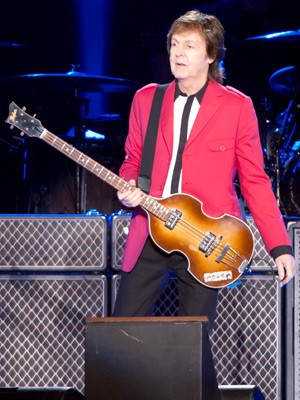 Paul toca baixo em show em Brasília
(Foto: Fábio Tito/G1)
Paul toca baixo em show em Brasília
(Foto: Fábio Tito/G1)
Homenagens
Além da “garotada”, que foi lembrada antes e depois de “All together now”, Paul também prestou homenagens aos ex-beatles John Lennon e George Harrison, à mulher Nancy Shevell e à ex-mulher Linda.
A primeira citação aconteceu na sétima canção. “Esta música eu escrevi para a minha mulher, Nancy”, disse antes de tocar “My Valentine”, com os atores Johnny Depp e Natalie Portman mostrando a letra em linguagem de sinais no telão.
Não demorou muito e ex-beatle prestou homenagem à ex-mulher e mãe de seus filhos, Linda Eastman, tocando e cantando “Maybe i’m amazed”. John foi citado antes de “Here today”.
George foi o responsável pela única música do show que não tem a assinatura de Paul: “Something”. Com imagens de Harrison e McCartney no telão, a música foi uma das mais cantadas pelo público.
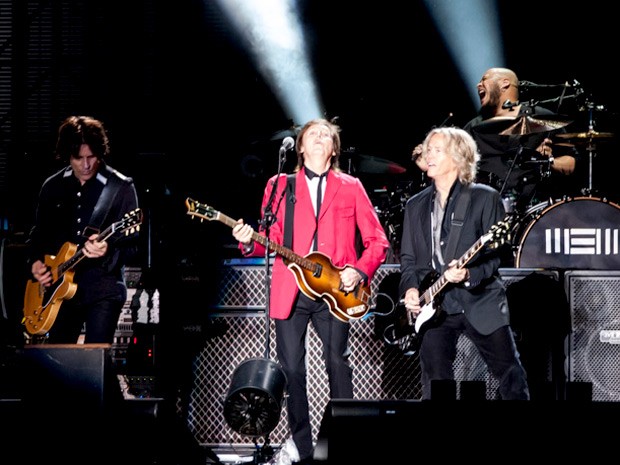 Paul McCartney e banda durante show no Mané Garrincha, em Brasília (Foto: Fábio Tito/G1)
Paul McCartney e banda durante show no Mané Garrincha, em Brasília (Foto: Fábio Tito/G1)
Segue o show
Os principais sucessos cantados por ele no famoso quarteto de Liverpool também foram entoados com o apoio de todo o público. “The long and winding road”, “Blackbird”, “Lady Madonna”, “Eleanor Rigby”, “Obladi oblada”, “Get Back” e “Let it be”, entre outras.
A primeira parte terminou com o tradicional coro de “na na na na” de “Hey Jude”, com Paul ao piano colorido. Um grupo de fãs levou diversas folhas de papel com a sílaba “na”, que foi vista no telão durante a parte final da canção.
O primeiro bis começou “Day Tripper”, a última música tocada pelos Beatles até o show no telhado do prédio da Apple, em Londres. Paul saiu do palco depois de interpretar “I saw her standing there”.
No útimo retorno, o asto apareceu com o violão e iniciou “Yesterday”. Em seguida, ele tocou a que é uma das músicas mais pesadas dos Beatles, “Helter skelter”. Como faz sempre, Paul trocou o baixo Hofner pelo piano e encerrou o show com a sequência final de Abbey Road, “Golden slumbers”, “Carry that weight” e “The end”.
A noite estava mais do que ganha. Paul acenou para o público, reuniu os músicos na frente do palco mais uma vez, agradeceu ao público, à equipe técnica e aos integrantes de sua banda, andou de um lado para o outro e foi para o camarim após uma chuva de papel picado, em verde, amarelo e azul. Ele também disse que Brasília é uma cidade linda e que pretende voltar.
Repertório
Magical mystery tour
Save us
All my loving
Listen to what the man said
Let me roll it
Paperback writer
My valentine
1985
The long and winding road
Maybe, i'm amazed
I've just seen a face
We can work it out
Another day
And i love her
Blackbird
Here today
New
Queenie eye
Lady Madonna
All together now
Lovely Rita
Everybody out there
Eleanor Rigby
For the benefit of Mr. Kite
Something
Obladi oblada
Band on the run
Back in the USSR
Let it be
Live and let die
Hey Jude
Bis 1
Day Tripper
Get back
I saw her standing there
Bis 2
Yesterday
Helter skelter
Golden slumbers
Carry that weight
The end
FOTOS: Paul McCartney em Brasília
Ex-beatle arriscou português ao tocar por duas horas e meia para um público de 46 mil pessoas.
Paul McCartney e banda durante show em noite de chuva no Estádio Nacional Mané Garrincha, em Brasília
Fábio Tito/G1

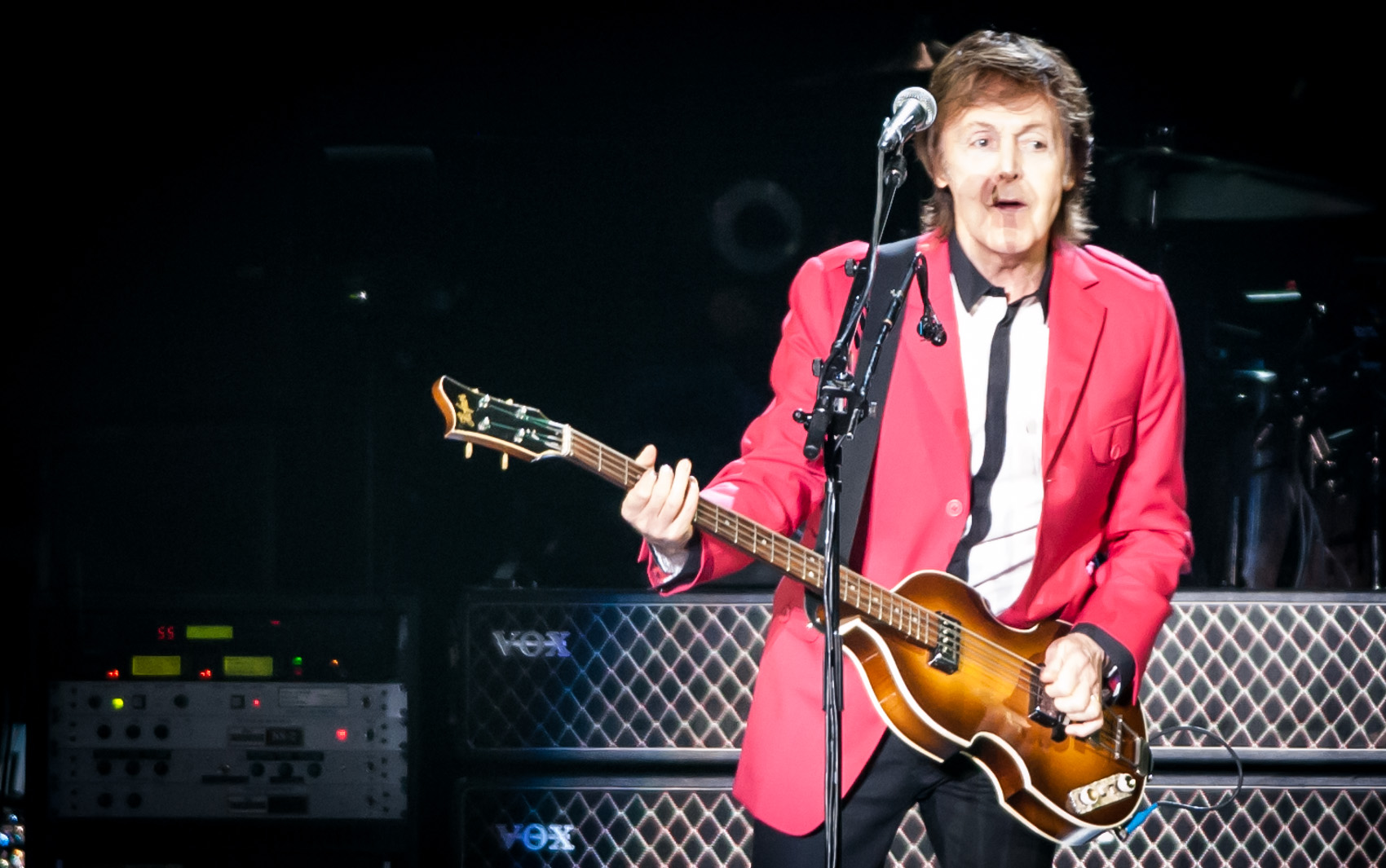
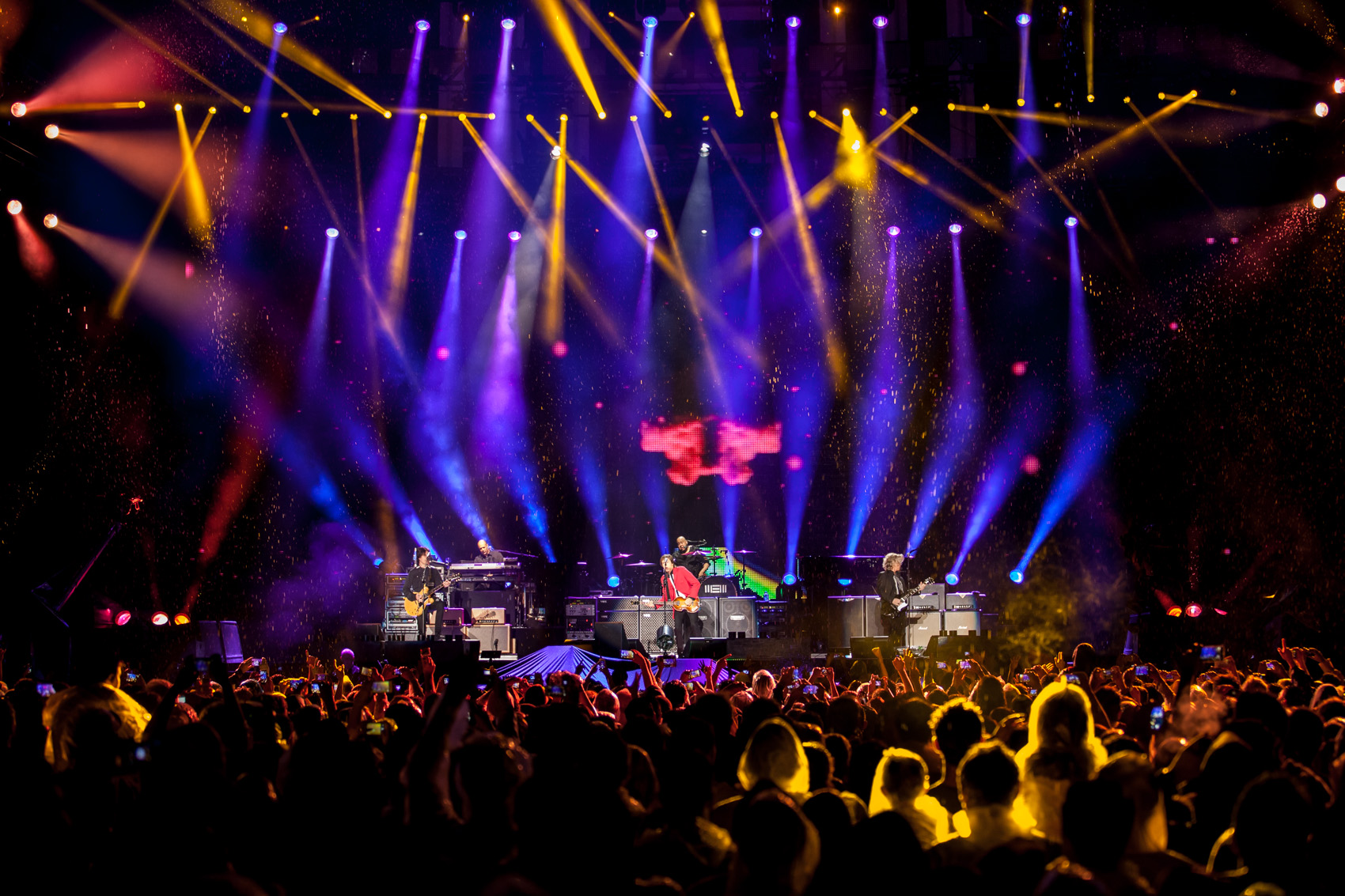
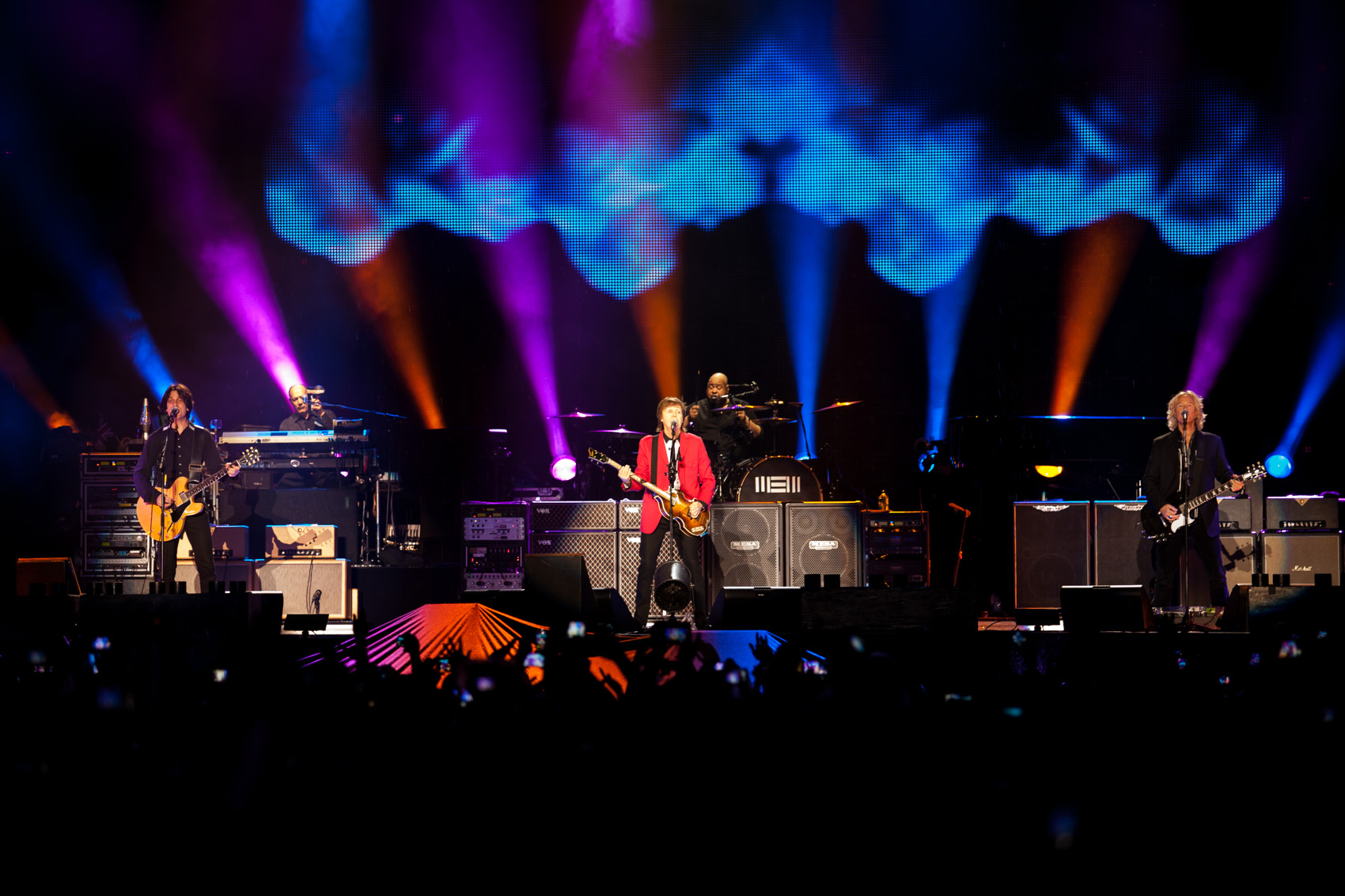
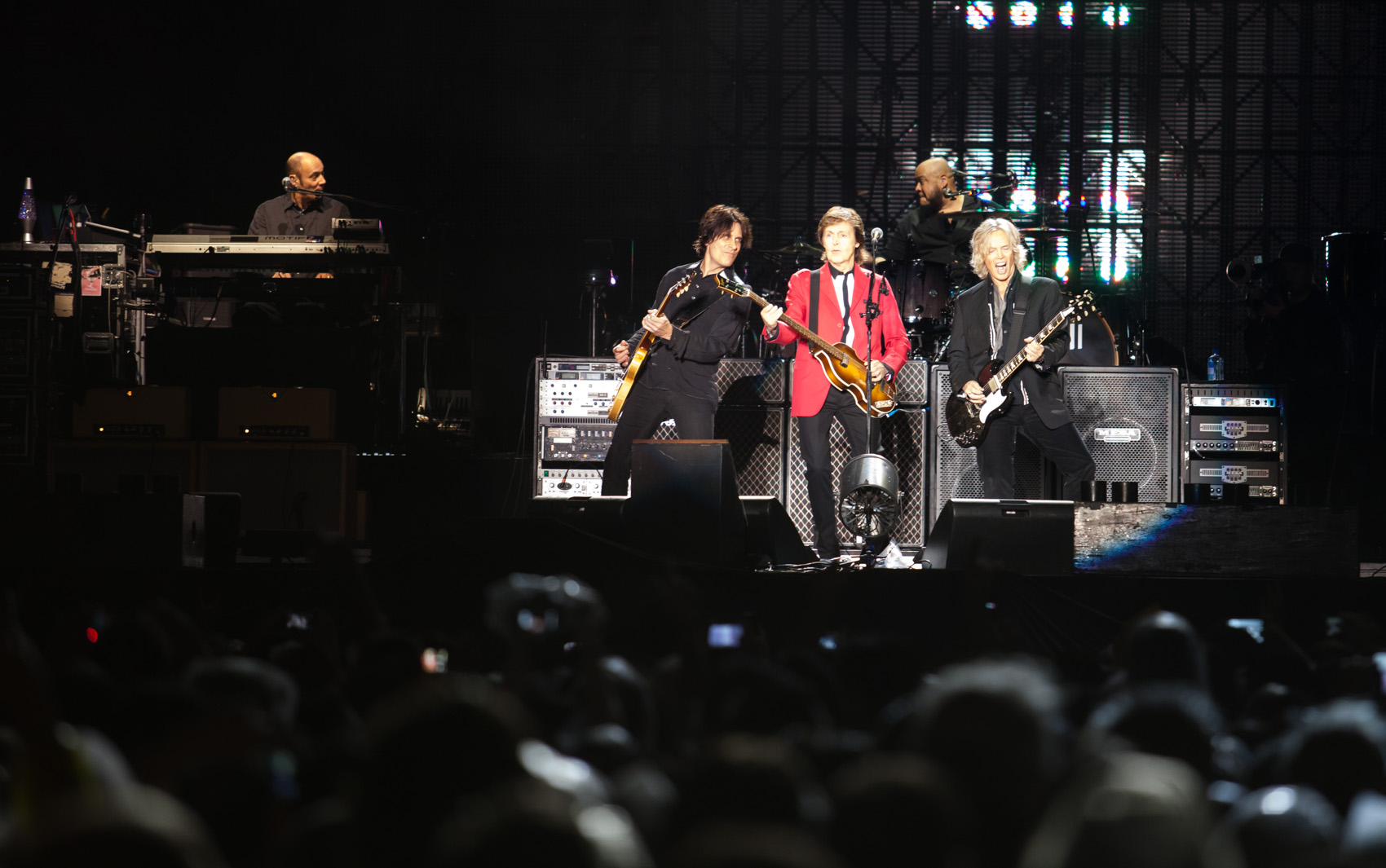
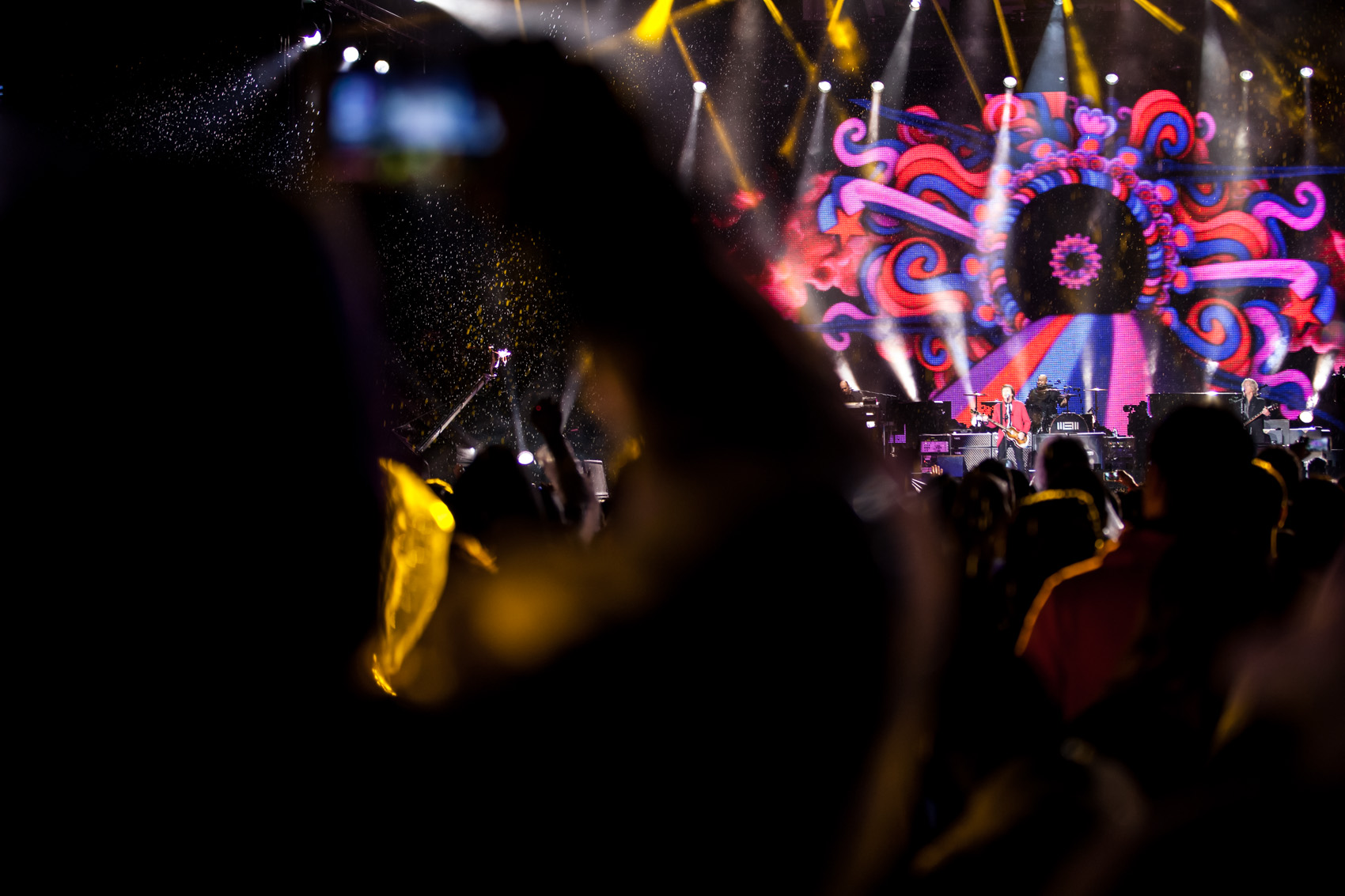

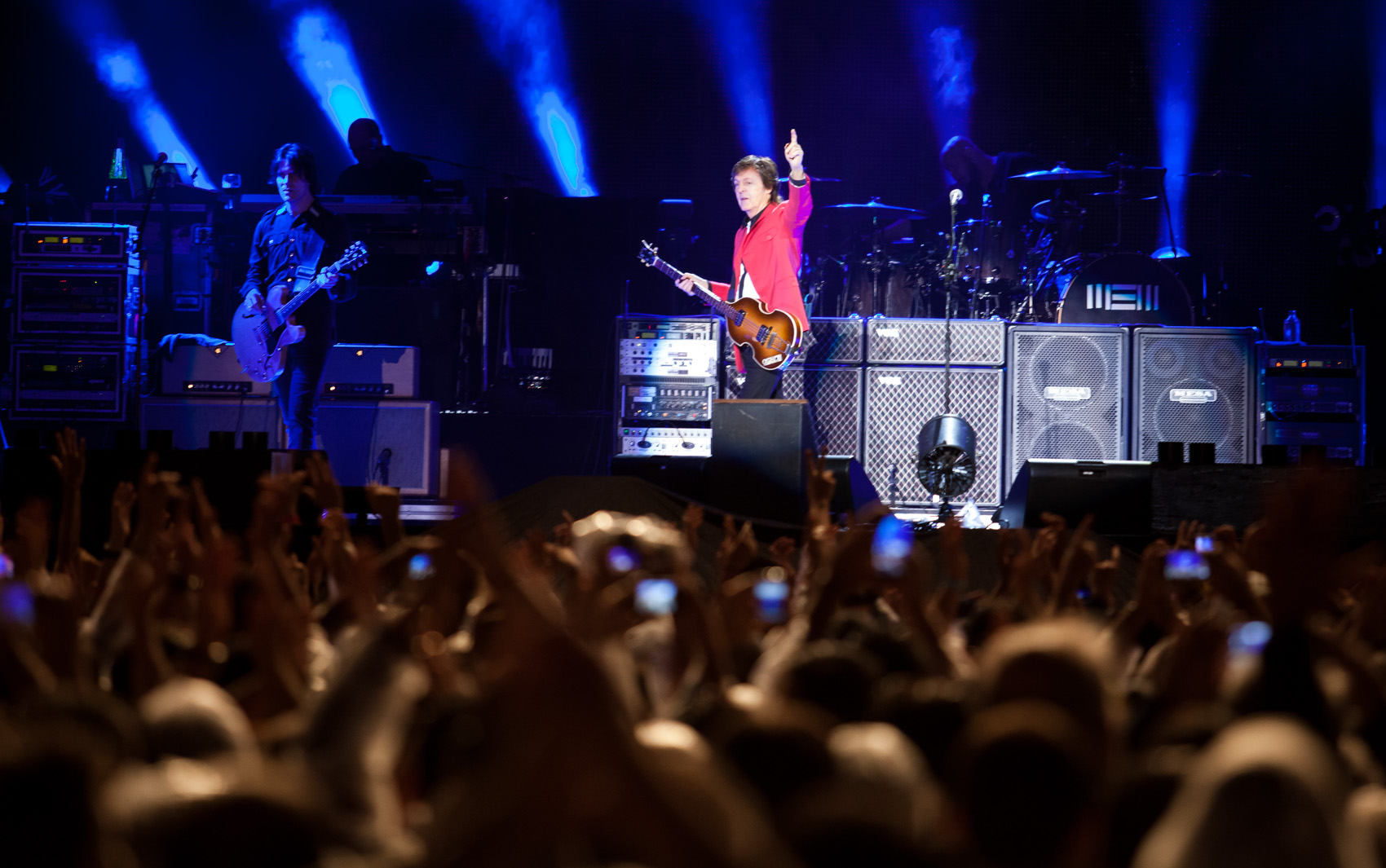
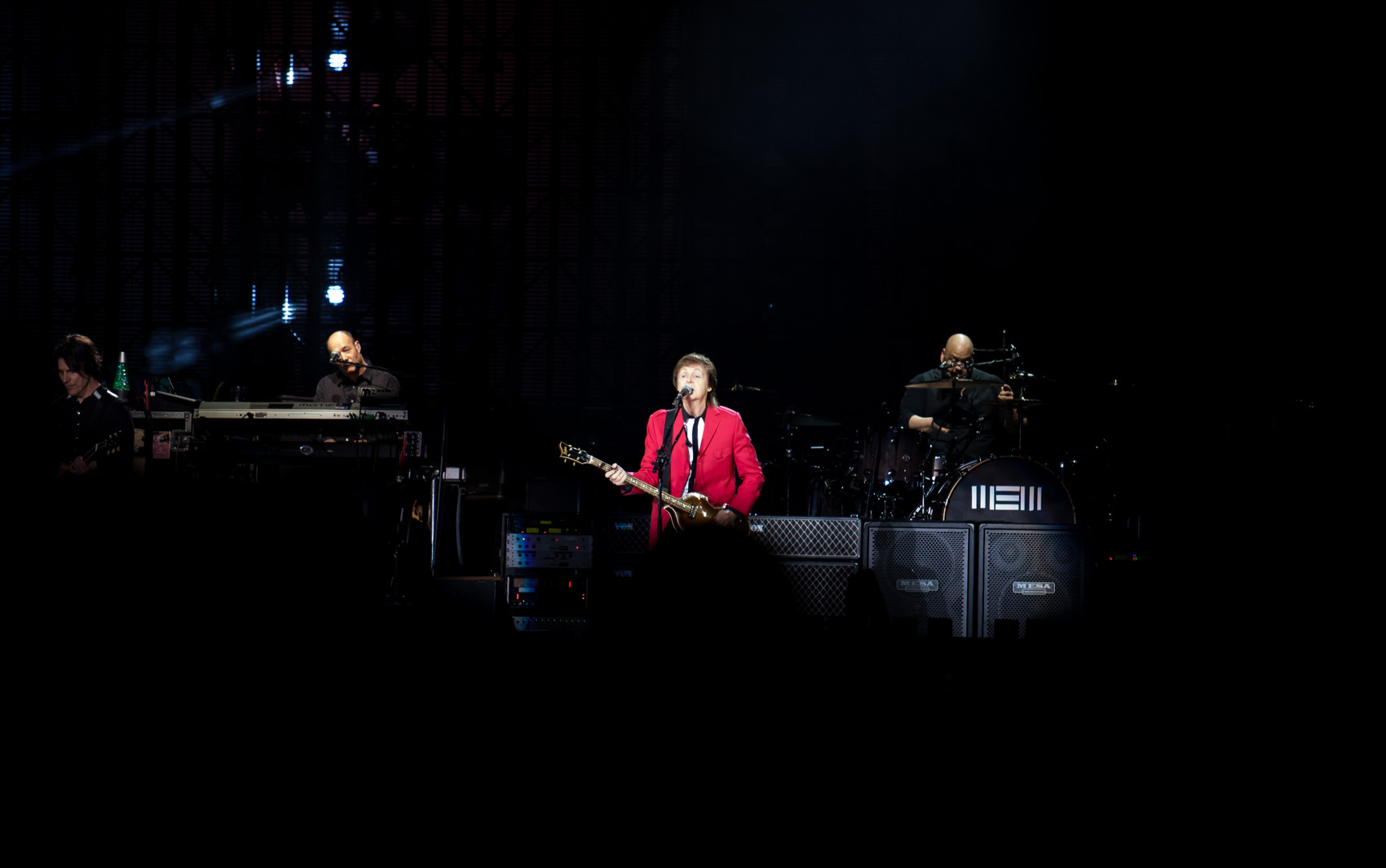

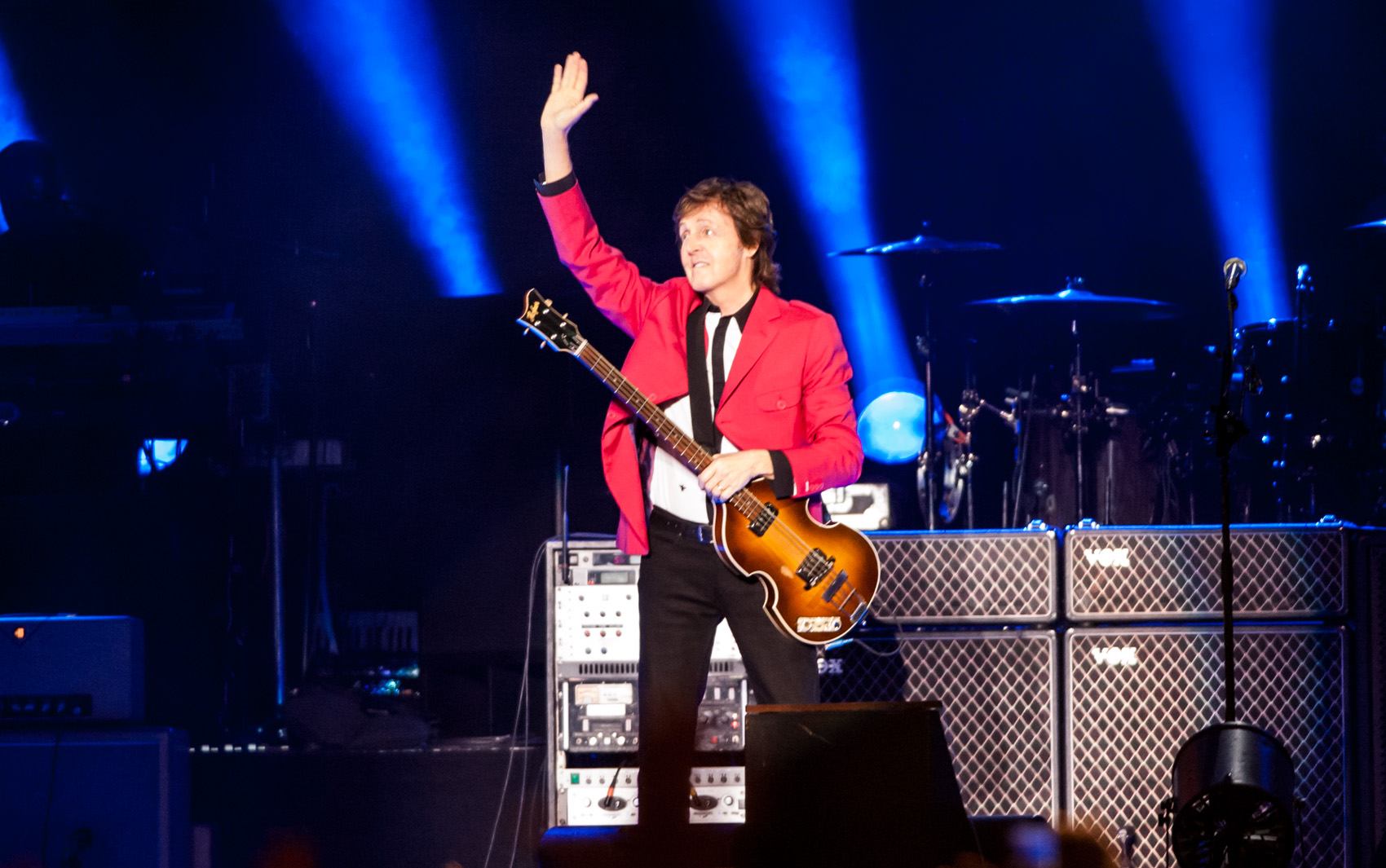
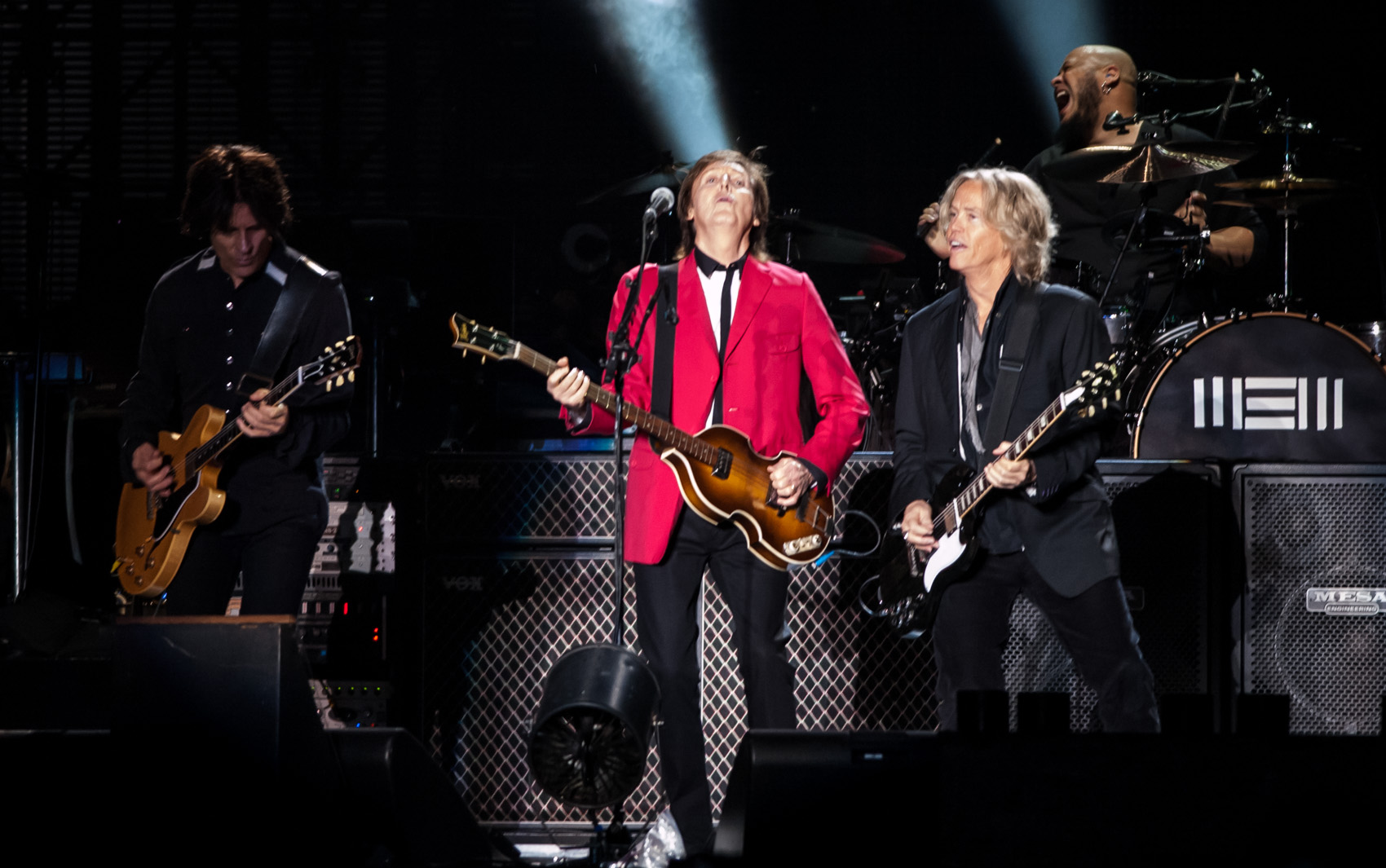
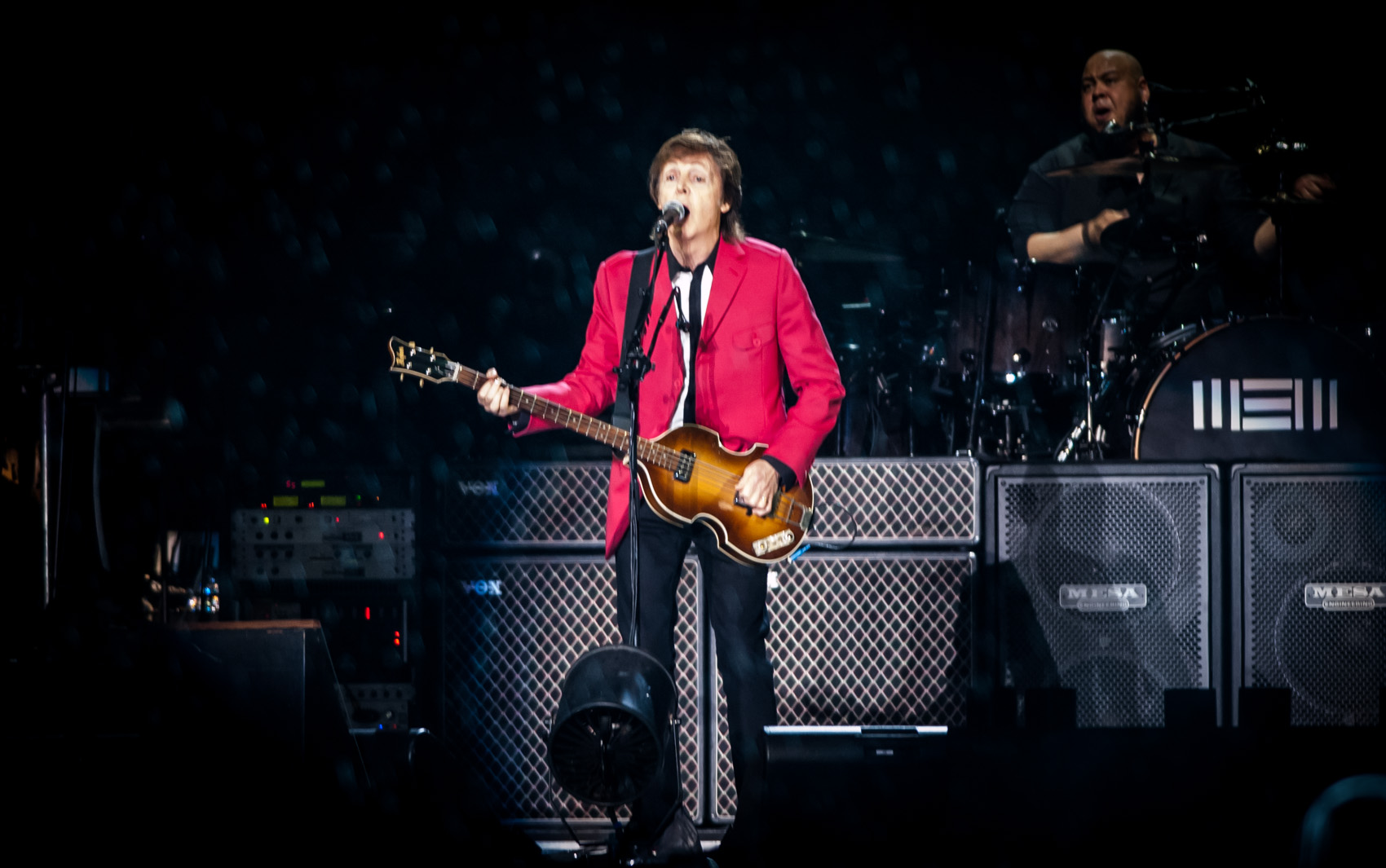
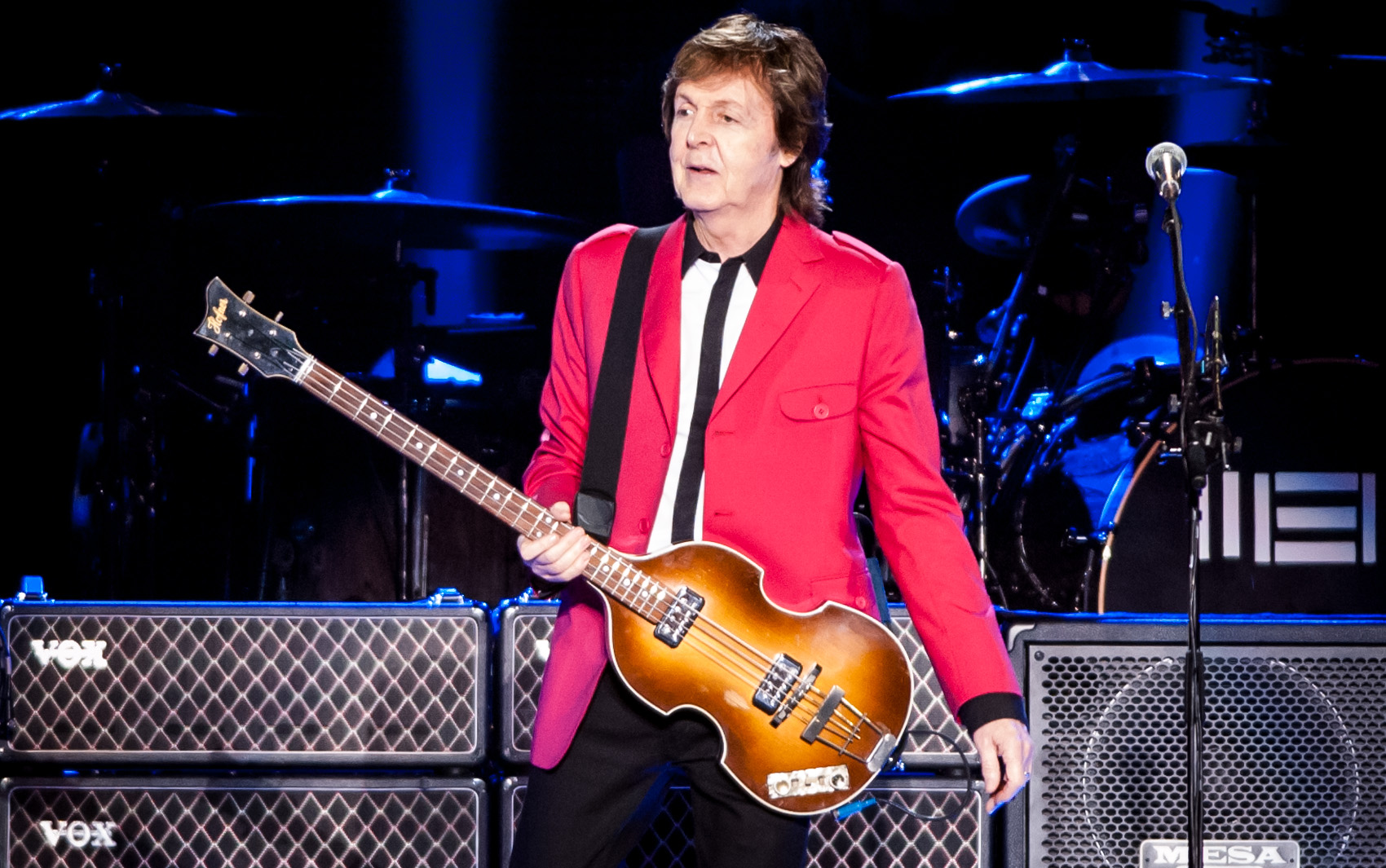
www.correiobraziliense.com.br
23/11 - Veja fotos da passagem de Paul McCartney em Brasília neste domingo
Correio Braziliense
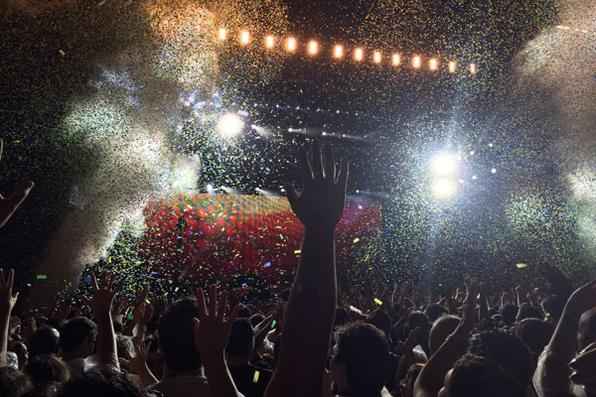
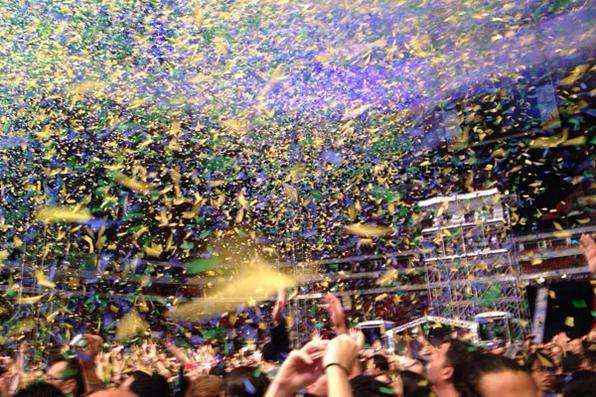
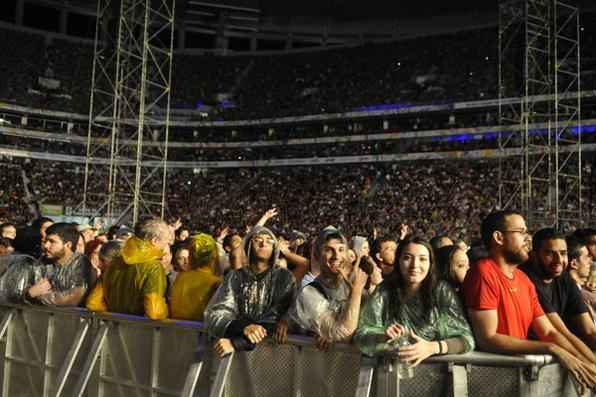
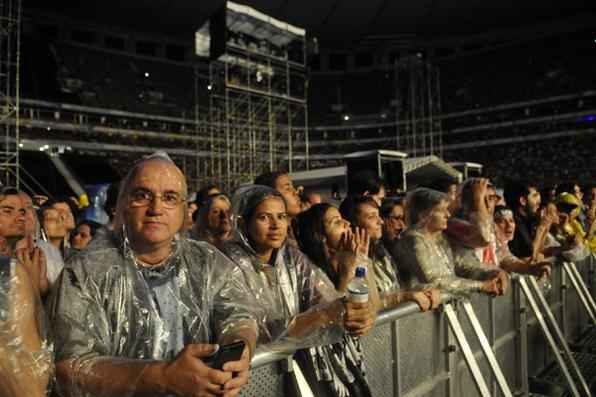
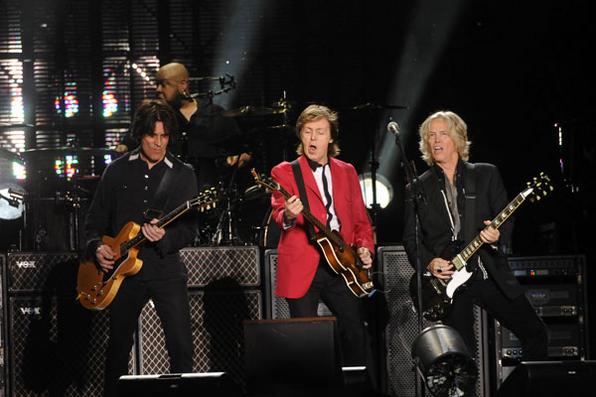
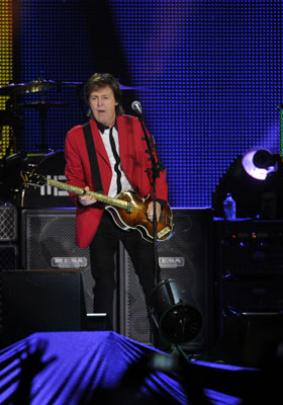
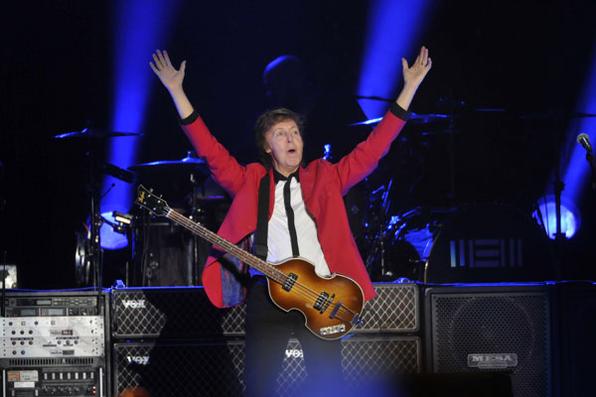
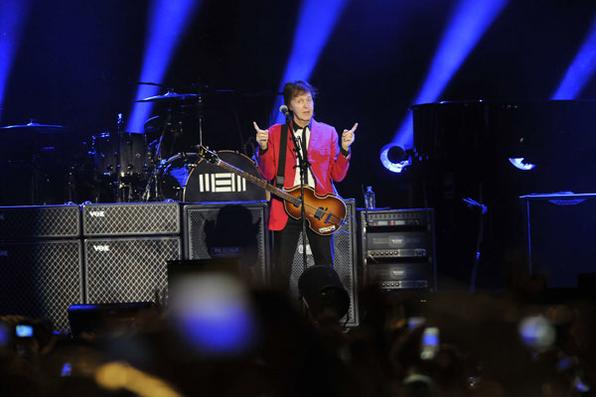
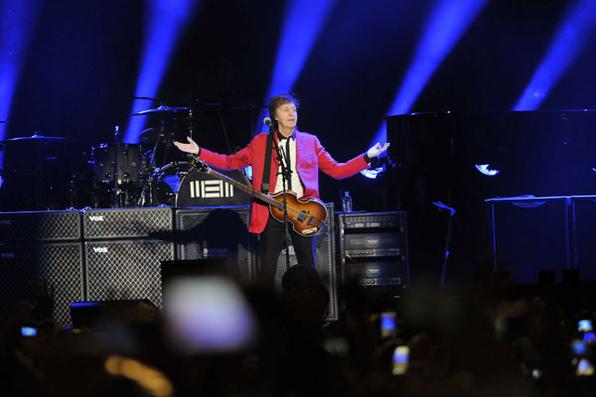
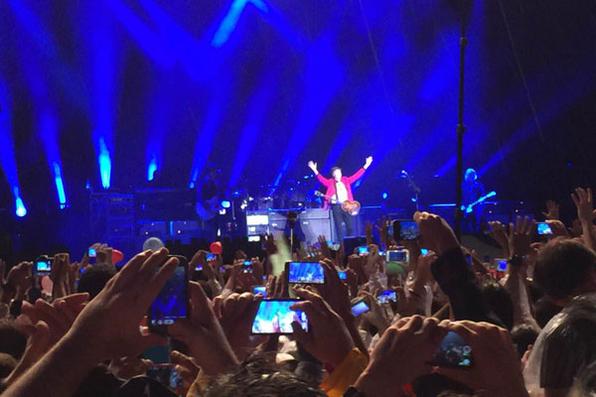
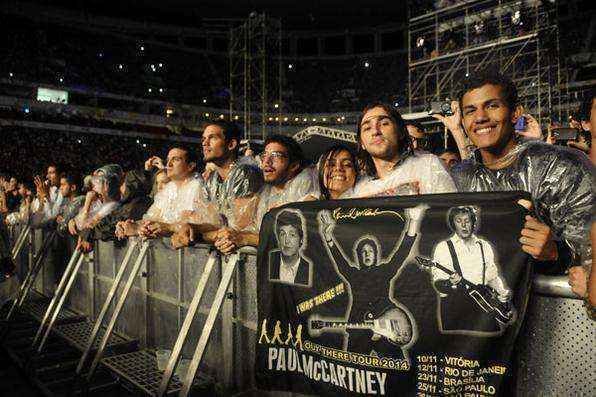
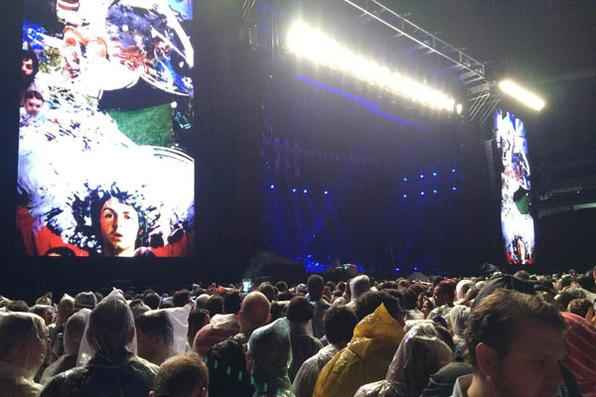

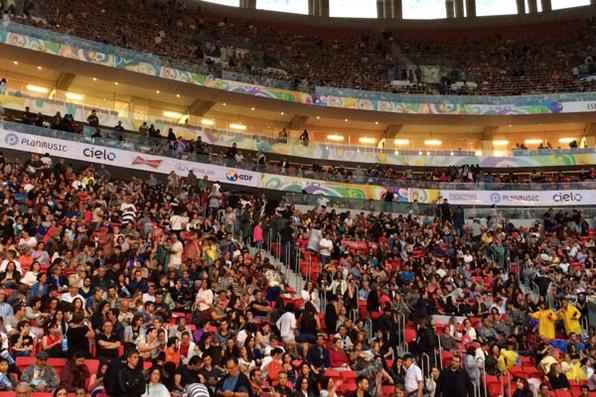
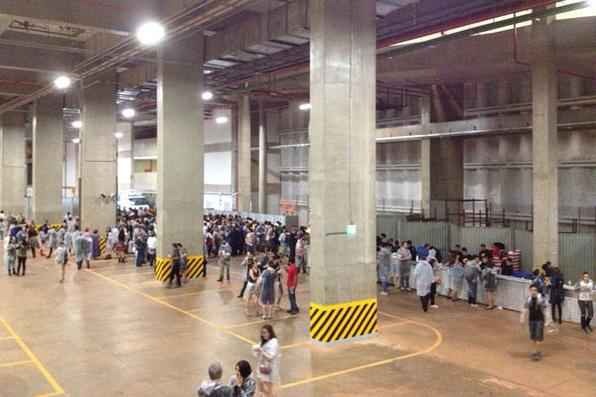
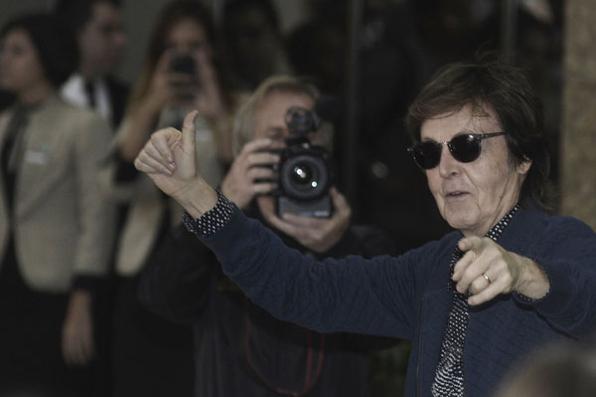
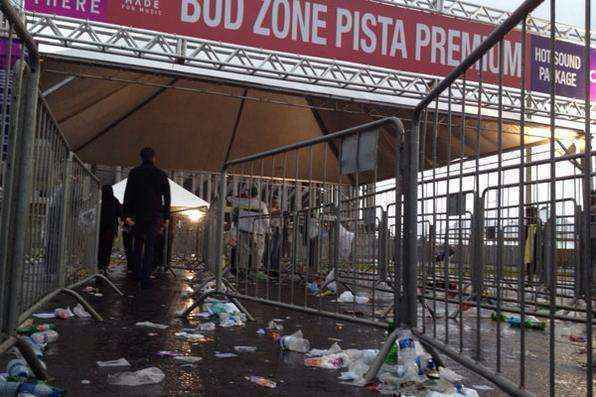
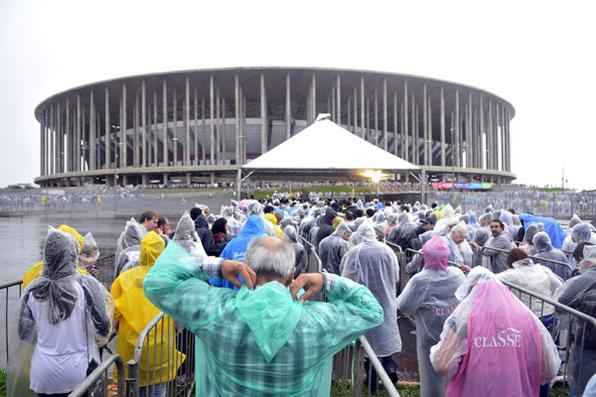
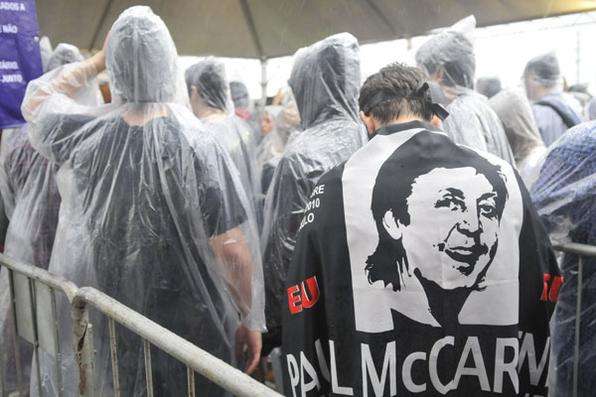
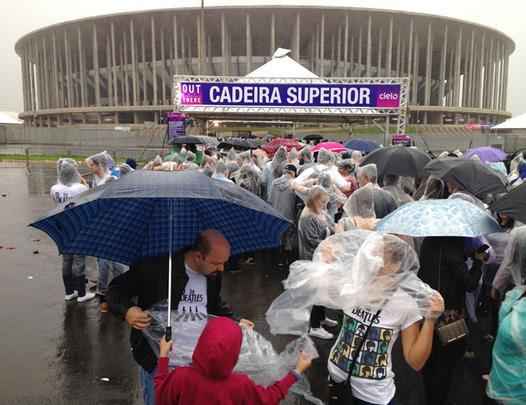
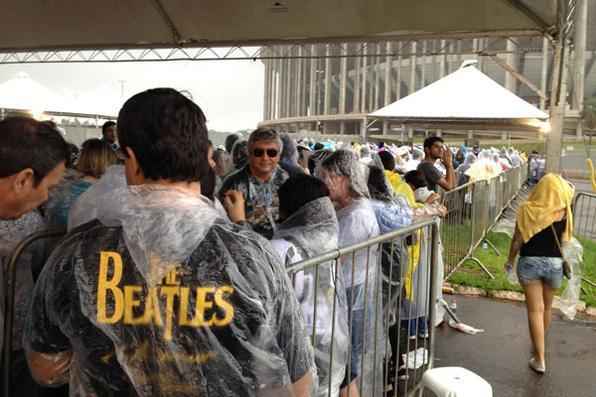
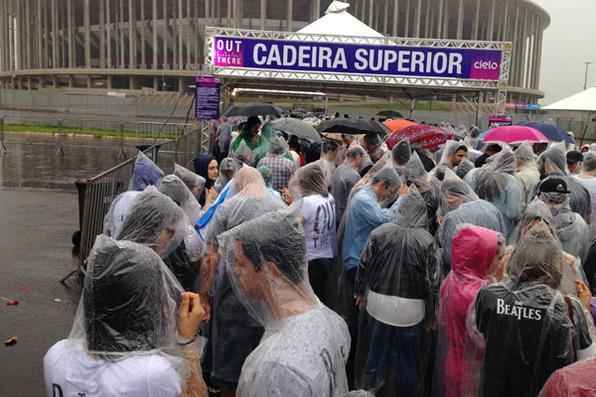
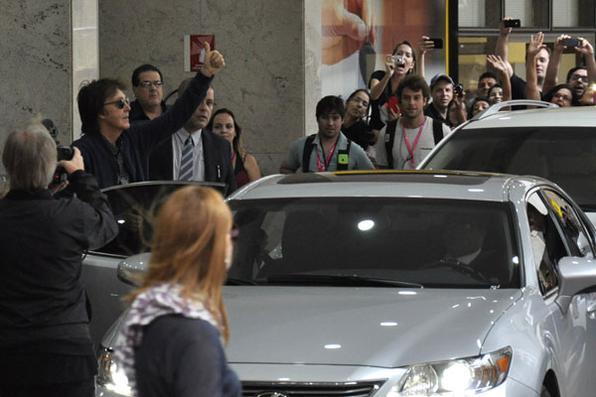
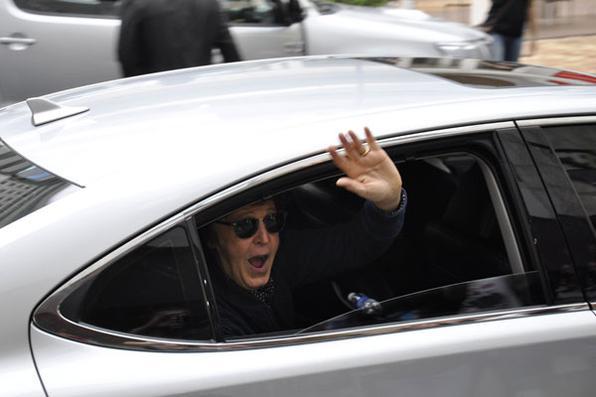



















![Paul McCartney- Recording Sessions [1969-2013] 2](http://somethingelsereviews.com/wp-content/uploads/2014/11/Paul-McCartney-Recording-Sessions-1969-2013-2-198x305.jpg)



































































